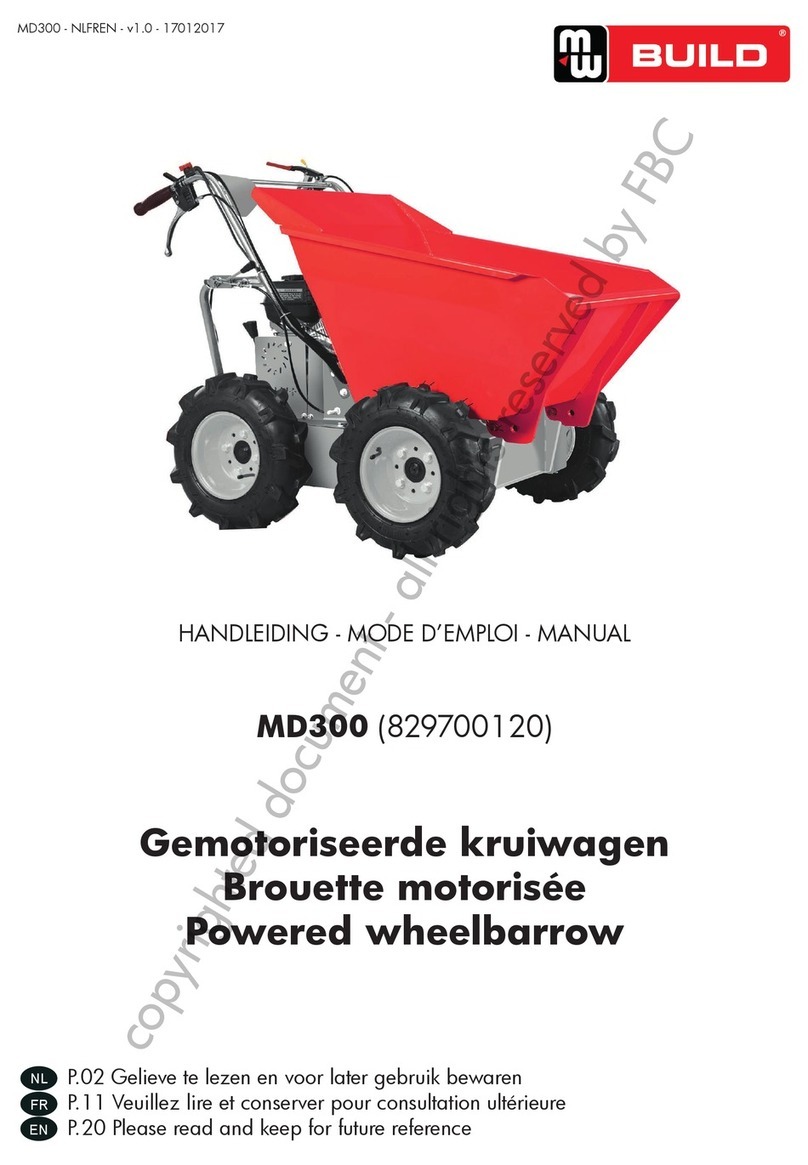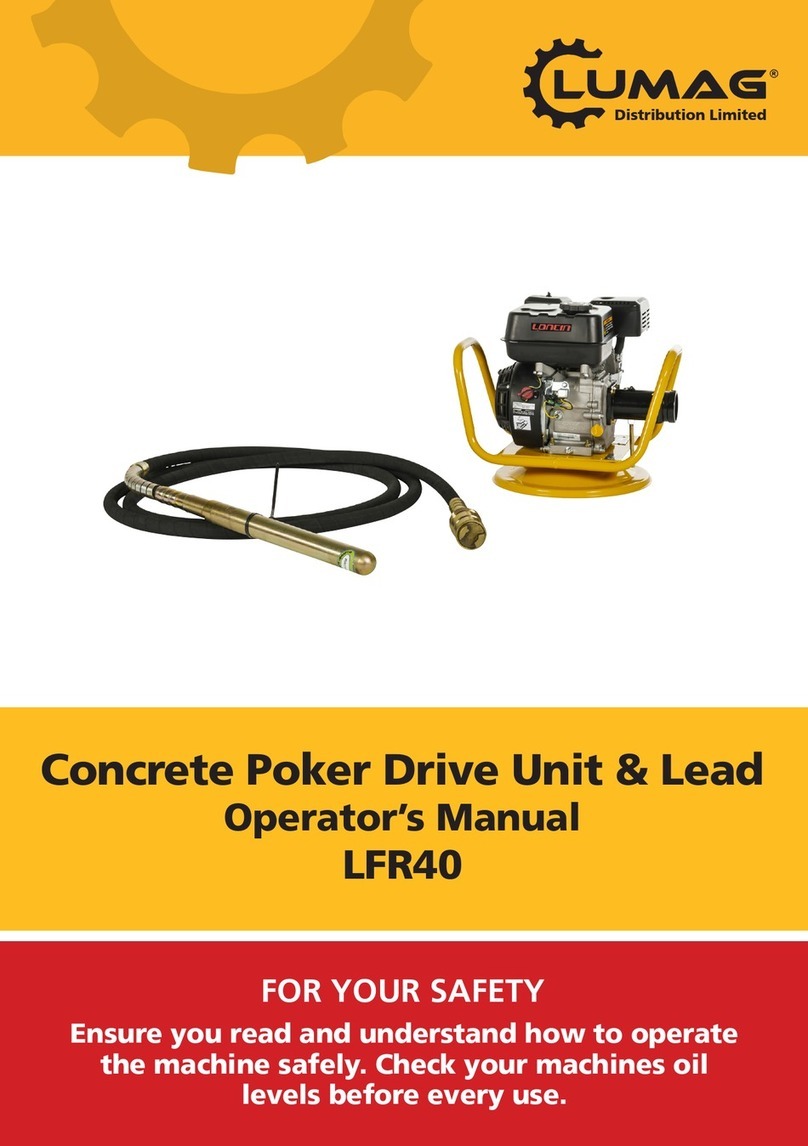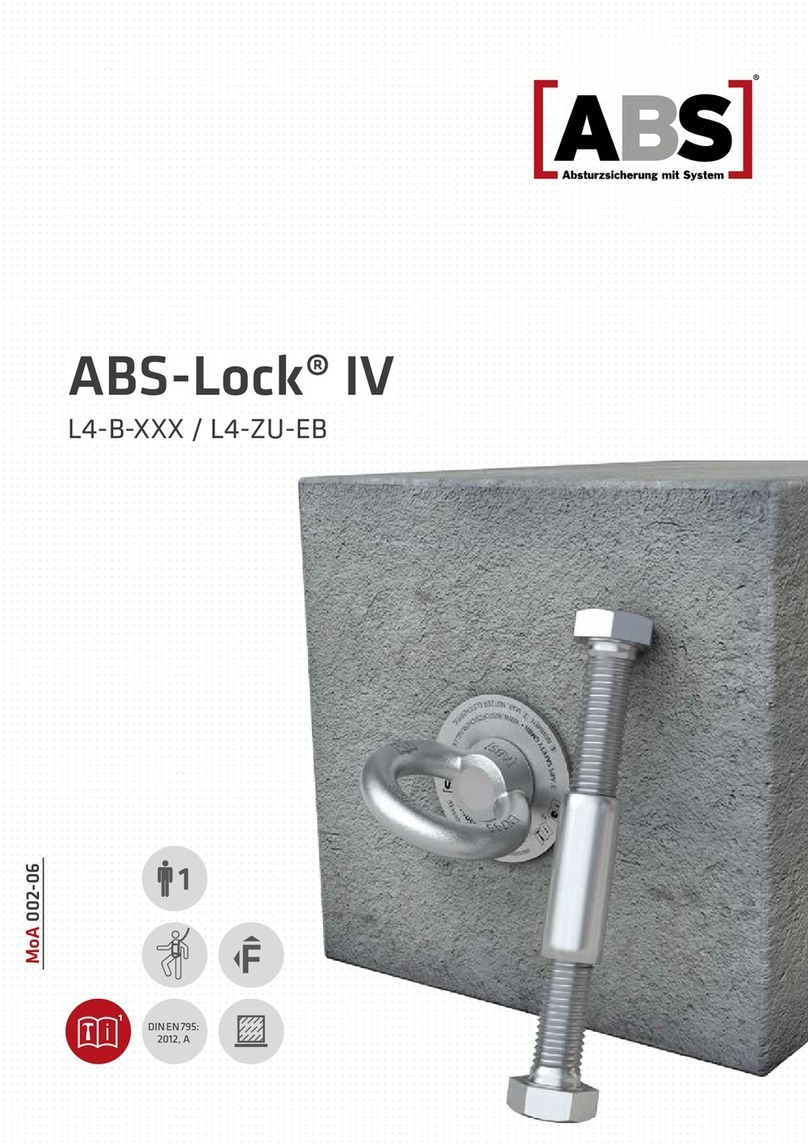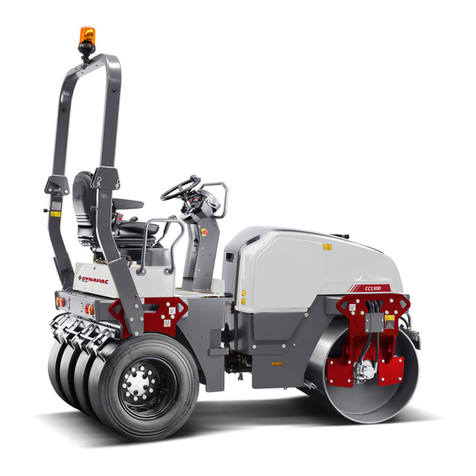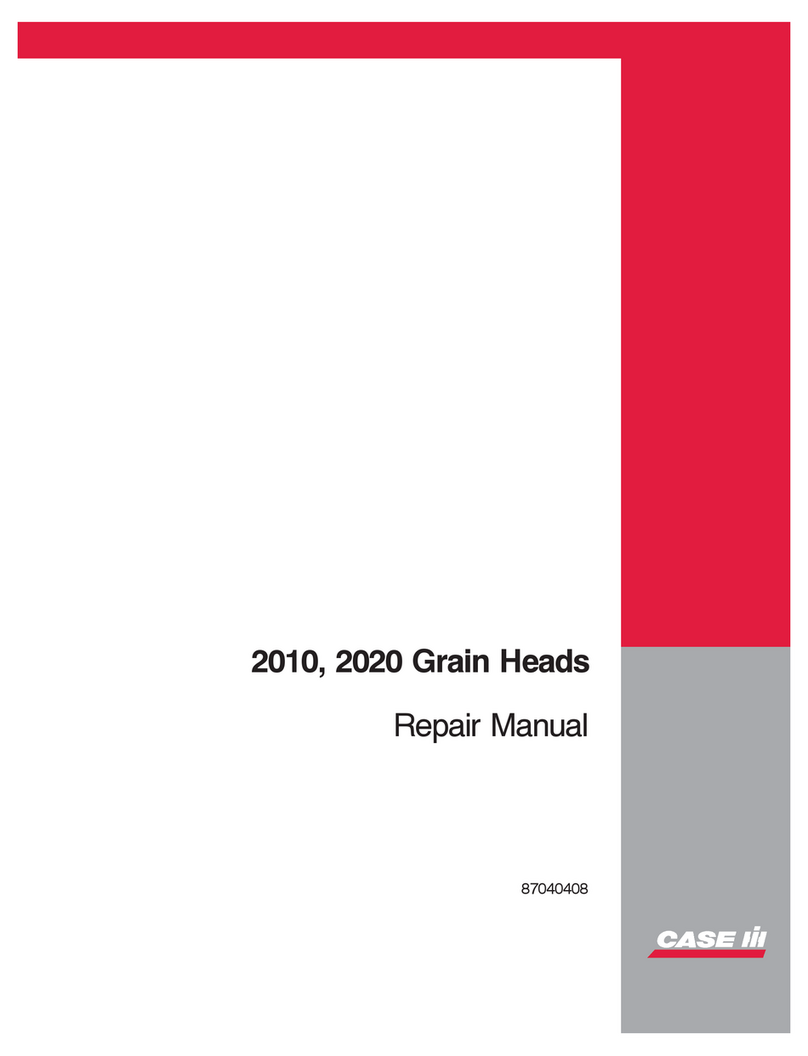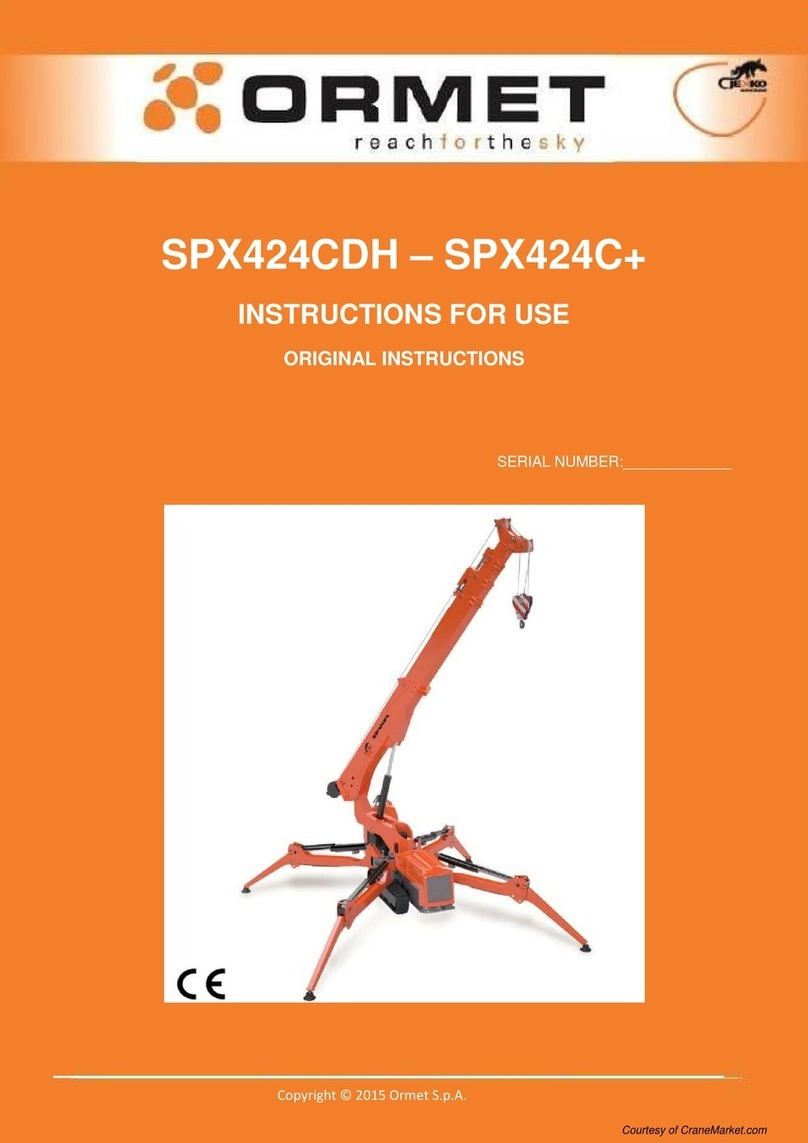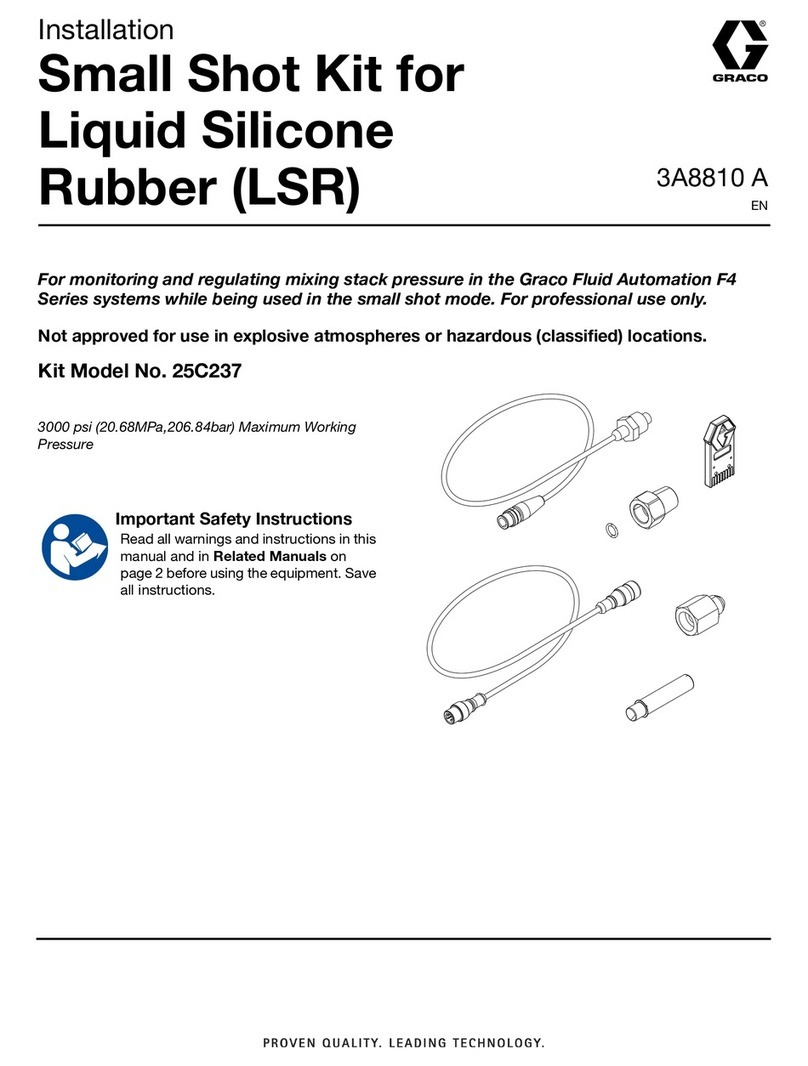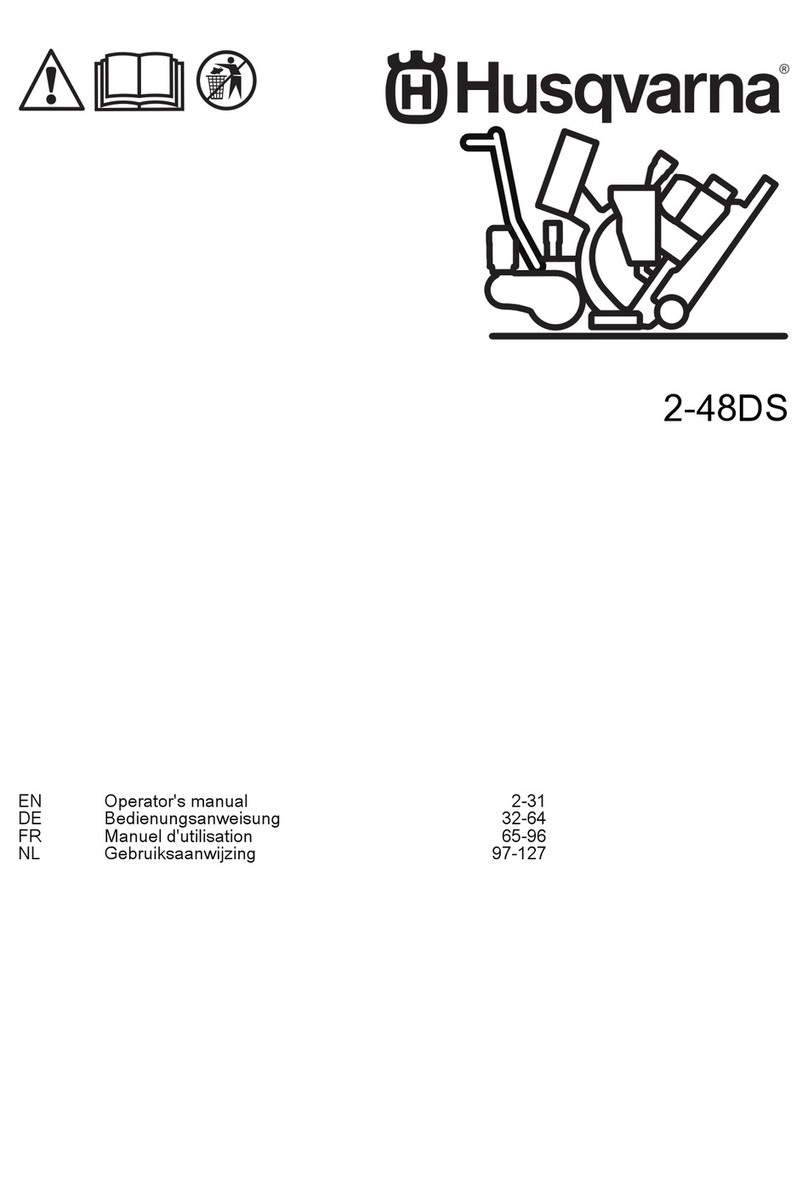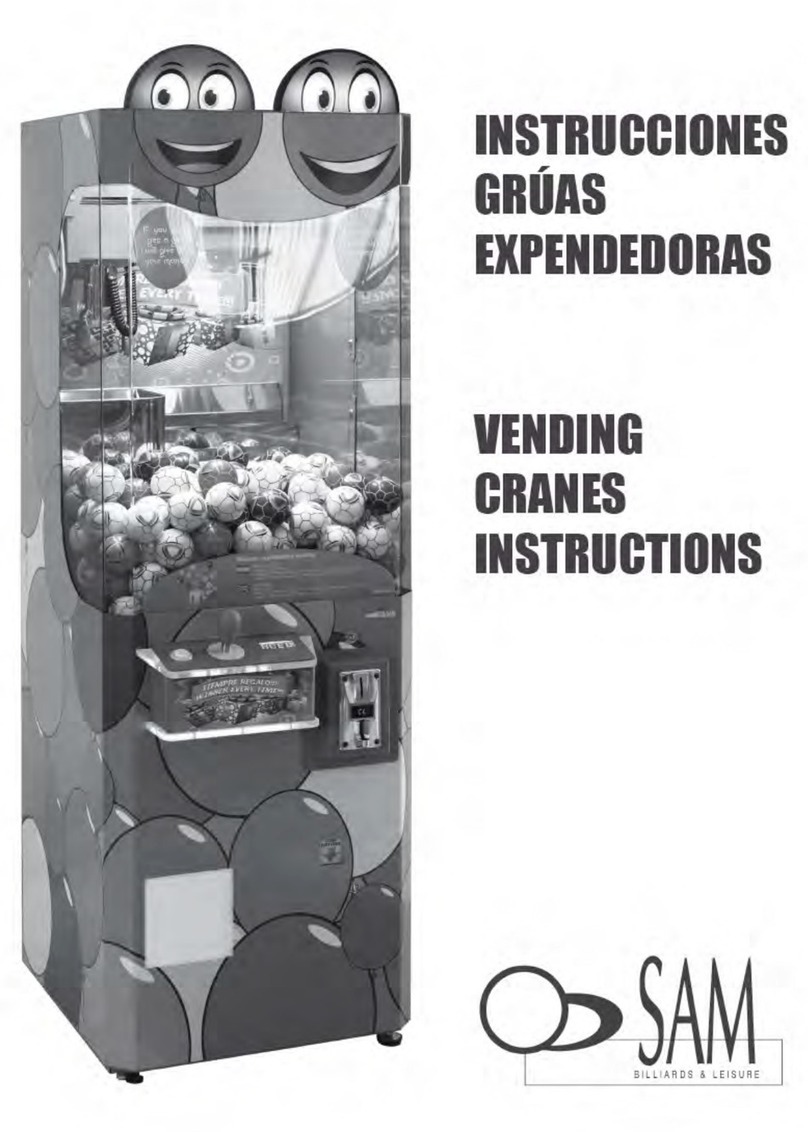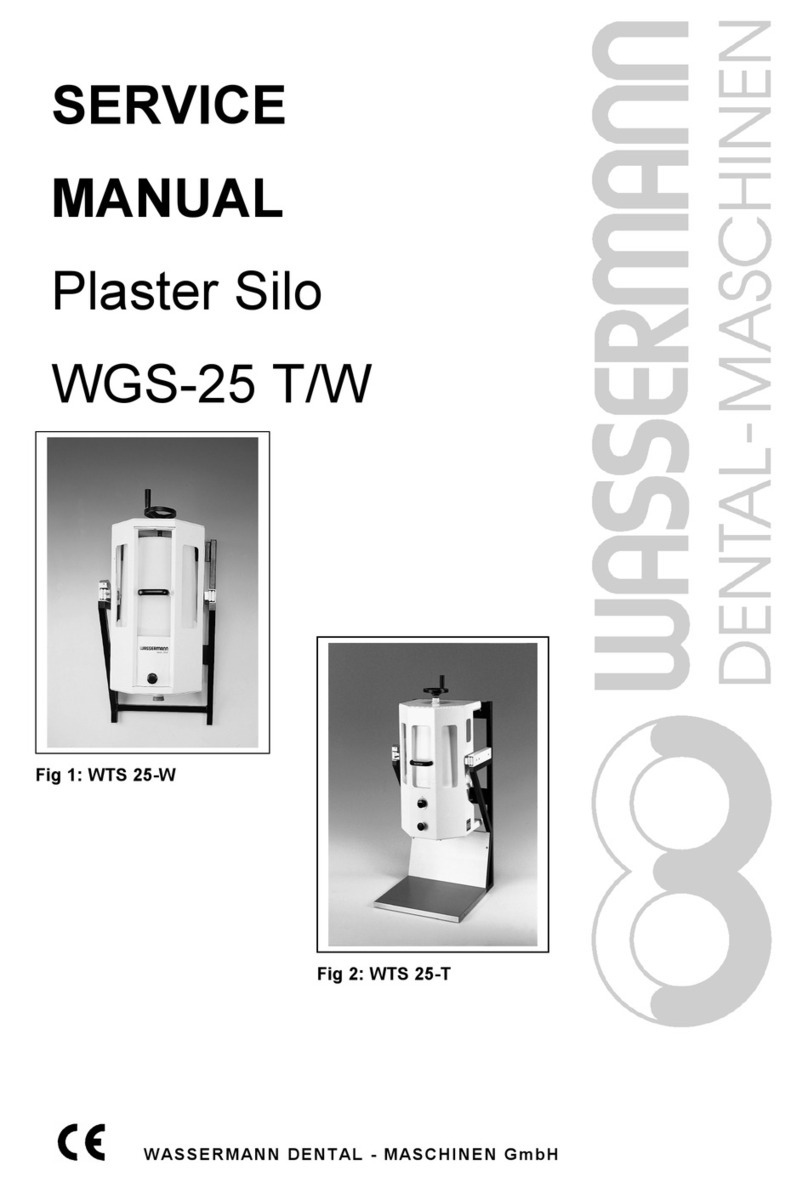MW BUILD MRD300 User manual

MRD300 - NLFREN - v1.0 - 19012017
HANDLEIDING - MODE D’EMPLOI - MANUAL
MRD300 (829700122)
Gemotoriseerde mini rupsdumper
Brouette motorisée sur chenilles
Tracked dumper
P.02 Gelieve te lezen en voor later gebruik bewaren
P.11 Veuillez lire et conserver pour consultation ultérieure
P.20 Please read and keep for future reference
FR
EN
NL
copyrighted document - all rights reserved by FBC

MRD300 - NLFREN - v1.0 - 19012017
2
NL
1 Veiligheid
Symbolen
De naamplaat op uw machine bevat symbolen. Deze kunnen belangrijke informatie over het product geven, of
gebruiksinstructies.
Inhoud
1 Veiligheid..............................................................................................................................................................2
2 Specicaties en omschrijving van de machine ............................................................................................................3
3 Leveringsomvang....................................................................................................................................................5
4 Montage...............................................................................................................................................................6
5 Bediening .............................................................................................................................................................7
6 Onderhoud ...........................................................................................................................................................8
7 Opslag ...............................................................................................................................................................10
8 Problemen oplossen..............................................................................................................................................10
9 Onderdelen......................................................................................................................................................... 29
10 EG conformiteitsverklaring ...................................................................................................................................31
Lees deze instructies aandachtig.
Gebruik lichamelijke beschermingen. Draag een veiligheidsbril en gehoorbescherming.
Het is verboden de veiligheidsvoorzieningen te verwijderen of te wijzigen.
Houd uw handen ver van roterende delen.
Raak de hete onderdelen van de machine niet aan.
Rook niet en blootstel de machine niet aan open vuur.
Houd kinderen en andere personen buiten de werkruimte.
TABLE OF CONTENTS
INTRODUCTION
Your new powered wheelbarrow will more than
satisfy your expectations. It has been manufactured
under stringent quality standards to meet superior
performance criteria. You will find it easy and safe
to operate, and with proper care, it will give you
many years of dependable service.
Carefully read through this entire
operator’s manual before using this
unit. Take special care to heed the
cautions and warnings.
Introduction
Specifications
Symbols
Safety
General Safety Rules
Specific Safety Rules
Contents supplied
Assembly
Know your powered wheelbarrow
Features & Controls
Powered Wheelbarrow Operation
Maintenance
Storage
Trouble Shooting
Parts Schedule
2
2
2
3
3
5
6
6
8
8
9
10
11
12
13
2
ENVIRONMENTAL
Recycle unwanted materials instead of
disposing of them as waste. All tools, hoses
and packaging should be resorted, taken
to the local recycling center and disposed
of in an environment-friendly safe way.
The rating plate on your machine may show
symbols. These represent important information
about the product or instructions on its use.
SYMBOLS
Powered Wheelbarrow
Coution! Ignoring the safety signs and
warnings applied on the machine as well
as ignoring the security and operating
instrutions can cause serious injuries and
even lead to death.
The four-speed gearbox, three forward and one
reverse, lies at the heart of the unit. It is oversized
so as to manage safely the huge torques generated
by the engine. Thanks to its efficient reduction
gearing, it is capable of moving around in every
situation and bearing any load.
The Engine manufacturer is responsible for all
engine-related issues with regards to performance,
power rating, specifications, warranty and service.
Please refer to the Engine Manufacturer’s
owner’s/operator’s manual, packed separately
with your unit, for more information.
Specifications
Item No.
Engine
Transmission
Load Capacity
Box Length
Box Width
Box Depth
09615
196cc,4.8kW/3600/min
3F+1R
300 kg
940 mm
635 mm
330 mm
95 dB(A) k=2.51 dB(A)
100 dB(A)
84.7 dB(A) k=3 dB(A)
3.92 m/s2k=1.5 m/s2
160 kg
Vibratinglevelonhandlebargrips:
Weight
Sound power
level ( LwA )
Sound pressure level ( LpA )
Measured
Guaranteed
Wear eye protection.
Wear hearing protection.
Read these instructions for use carefully.
Wear safety footwear.
Wear safety gloves.
3
SAFETY
General Safety Rules
Understand your machine
Read and understand the operator’s manual and
labels affixed to the machine. Learn its application
and limitations as well as the specific potential
hazards peculiar to it.
Be thoroughly familiar with the controls and their
proper operation. Know how to stop the machine
and disengage the controls quickly.
Make sure to read and understand all the
instructions and safety precautions as outlined in
the Engine Manufacturer’s Manual, packed
separately with your unit. Do not attempt to operate
the machine until you fully understand how to
properly operate and maintain the Engine and
how to avoid accidental injuries and/or property
damage.
Work area
Never start or run the machine inside a closed
area. The exhaust fumes are dangerous, containing
carbon monoxide, an odorless and deadly gas.
Operate this unit only in a well ventilated outdoor
area.
Never operate the machine without good visibility
or light.
Personal safety
Do not operate the machine while under the
influence of drugs, alcohol, or any medication that
could affect your ability to use it properly.
Dress properly. Wear heavy long pants, boots and
gloves. Do not wear loose clothing, short pants,
and jewelry of any kind. Secure long hair so it is
above shoulder level. Keep your hair, clothing and
gloves away from moving parts. Loose clothes,
jewelry or long hair can be caught in moving parts.
Use safety equipment. Always wear eye protection.
Safety equipment such as a dust mask, hard hat,
or hearing protection used for appropriate
conditions will reduce personal injuries.
Check your machine before starting it. Keep guards
in place and in working order. Make sure all nuts,
bolts, etc. are securely tightened.
Never operate the machine when it is in need of
repair or is in poor mechanical condition. Replace
Keep your hands clear from all rotating
parts.
Do not smoke or have open flames.
Thrown objects.
Keep bystanders away.
Powered Wheelbarrow
It is forbidden to remove or tamper with
the protection devices and safety devices.
Keep away from hot parts on the machine.
Never start or run the engine inside a
closed area.
The exhaust fumes are dangerous,
containing carbon monoxide. Staying in
the environment can lead to
unconsciousness and death.
Do not operate on slopes with angle over
20oor tip loading at an inclined position.
Always turn off the engine before starting
maintenance.
Het niet naleven van de veiligheidsbordjes, veiligheidsvoorschriften en gebruiksinstructies van deze handleiding
kan zware letsels of zelfs de dood als gevolg hebben.
Gebruik lichamelijke beschermingen. Draag veiligheidsschoenen.
Gebruik lichamelijke beschermingen. Draag veiligheidshandschoenen.
Geworpen voorwerpen.
Start de machine nooit in een gesloten ruimte.
3
SAFETY
General Safety Rules
Understand your machine
Read and understand the operator’s manual and
labels affixed to the machine. Learn its application
and limitations as well as the specific potential
hazards peculiar to it.
Be thoroughly familiar with the controls and their
proper operation. Know how to stop the machine
and disengage the controls quickly.
Make sure to read and understand all the
instructions and safety precautions as outlined in
the Engine Manufacturer’s Manual, packed
separately with your unit. Do not attempt to operate
the machine until you fully understand how to
properly operate and maintain the Engine and
how to avoid accidental injuries and/or property
damage.
Work area
Never start or run the machine inside a closed
area. The exhaust fumes are dangerous, containing
carbon monoxide, an odorless and deadly gas.
Operate this unit only in a well ventilated outdoor
area.
Never operate the machine without good visibility
or light.
Personal safety
Do not operate the machine while under the
influence of drugs, alcohol, or any medication that
could affect your ability to use it properly.
Dress properly. Wear heavy long pants, boots and
gloves. Do not wear loose clothing, short pants,
and jewelry of any kind. Secure long hair so it is
above shoulder level. Keep your hair, clothing and
gloves away from moving parts. Loose clothes,
jewelry or long hair can be caught in moving parts.
Use safety equipment. Always wear eye protection.
Safety equipment such as a dust mask, hard hat,
or hearing protection used for appropriate
conditions will reduce personal injuries.
Check your machine before starting it. Keep guards
in place and in working order. Make sure all nuts,
bolts, etc. are securely tightened.
Never operate the machine when it is in need of
repair or is in poor mechanical condition. Replace
Keep your hands clear from all rotating
parts.
Do not smoke or have open flames.
Thrown objects.
Keep bystanders away.
Powered Wheelbarrow
It is forbidden to remove or tamper with
the protection devices and safety devices.
Keep away from hot parts on the machine.
Never start or run the engine inside a
closed area.
The exhaust fumes are dangerous,
containing carbon monoxide. Staying in
the environment can lead to
unconsciousness and death.
Do not operate on slopes with angle over
20oor tip loading at an inclined position.
Always turn off the engine before starting
maintenance.
copyrighted document - all rights reserved by FBC

MRD300 - NLFREN - v1.0 - 19012017
3
NL
Veiligheidsvoorschriften
1. Lees en begrijp de handleiding en de op de machine aangebrachte labels. Leer het toepassingsgebied van de machine,
alsook de grenswaarden en mogelijke risico’s van de machine.
2. Verzeker u ervan, dat u de bedieningselementen en hun werking goed kent. Weet hoe de machine snel te stoppen en de
bedieningen uit te schakelen.
3. Zorg ervoor, alle instructies en veiligheidsvoorschriften te begrijpen. Gebruik de machine niet zolang u de werking ervan
niet goed kent.
4. De uitlaatgassen zijn schadelijk. Als de machine binnenshuis gebruikt wordt, zorg voor een goede ventilatie.
5. Gebruik de machine niet in een explosieve of ontvlambare atmosfeer.
6. Loop met de machine, ren niet.
7. Blijf waakzaam. Gebruik de machine niet als u onder de invloed bent van alcohol, drugs of geneesmiddelen die uw
concentratievermogen kunnen verminderen.
8. Draag gepaste kledij. Draag laarzen en handschoenen. Draag geen loszittende kleren.
9. Gebruik lichamelijke beschermingen. Draag steeds een veiligheidsbril en een gehoorbescherming.
10. Controleer de machine voor het begin van het werk. Zorg ervoor, dat de beschermingen goed op hun plaats zitten en
bedrijfsklaar zijn. Zorg ervoor dat alle bouten en moeren goed aangedraaid zijn.
11. Gebruik de machine niet als er een brandstof lekkage is, of als er een defect onderdeel is. Vervang de defecte of
ontbrekende onderdelen voor het gebruik.
12. Controleer altijd dat alle sleutels weg van de machine werden genomen alvorens deze in te schakelen.
13. Houd een goede balans. Werk nooit met de machine met blote voeten of met sandalen. Draag veiligheidshandschoenen
om je voeten te beschermen en uitglijden te voorkomen.
14. Schakel de machine uit om benzine te tanken of af te tappen. Wacht tot alle onderdelen afgekoeld zijn en maak zeker dat
er geen ontstekingsbronnen zoals vonken of vlammen in de buurt van de machine zijn. Houd de brandstof steeds weg van
ontstekingsbronnen.
15. Als tijdens het tanken gemorste brandstof voordoet, gebruik een droog doek om af te vegen en verplaats de machine
tenminste 5 m ver van het verontreinigde gebied.
16. Controleer de oliepeil voor het begin van het werk. Schakel de machine niet in als de oliepeil laag is.
17. Verander de instelling van de snelheidscontrole nooit. Een te hoge snelheid is gevaarlijk voor de gebruiker.
18. Laat de handgreep nooit los. Het risico neemt toe wanneer de machine niet langer geleid wordt.
19. De machine mag uitsluitend door volwassenen gebruikt worden. Houd de machine buiten bereik van kinderen.
20. Reparaties, onderhoud en instellingen moeten door gekwaliceerd personeel uitgevoerd worden.
21. Wanneer de machine niet meer bruikbaar is, verwijder deze op een milieuvriendelijk wijze. Breng deze naar uw verdeler
terug, deze zal voor een correcte afvalverwerking zorgen.
22. Vul nooit te veel brandstof in. Het brandstofniveau mag de markering op de tanklter niet overschrijden.
2 Specicaties en omschrijving van de machine
Model MRD300
Motor 6,5 pk / 196 cc
Versnellingen 3 vooruit + 1 achteruit
Laadcapaciteit 300 kg
Lengte laadbak 860 mm
Breedte laadbak 630 mm
Diepte laadbak 290 mm
Breedte rupsen 180 mm
Inhoud olietank 0,6 l
Inhoud benzinetank 3 l
Autonomie 4 h
Geluidsniveau 101 dB(A)
Netto gewicht 179 kg
copyrighted document - all rights reserved by FBC

MRD300 - NLFREN - v1.0 - 19012017
4
NL
MINI TRACKED DUMPER 9
GB
Engine Switch
The engine switch enables and disables the
ignition system.
The engine switch must be in the ON position
for the engine to run.
Turning the engine switch to the OFF position
stops the engine.
Clutch Control Lever
Squeeze the control lever, clutch engaged.
Release the lever, clutch disengaged.
Throttle Control
It controls engine speed. Put the throttle
control on low speed (L) or high speed (H) or
an intermediary position between L and H to
increase or decrease the speed of engine.
Left Steering Lever
Operate the lever to turn left.
KNOW YOUR MACHINE
Features and Controls
Throttle Control
Engine Switch
Right Steering Lever
Clutch Control Lever
Left Steering Lever
Dump Box
Track
Tipping Handle
Gearbox
Gear Selection Lever
Right Steering Lever
Operate the lever to turn right.
Gear Selection Lever
It controls forward or reverse movements of
the machine.
Tipping Handle
It controls tipping of the dump box. Pull
the tipping handle up to release the dump
box's locking device and raise the dump box.
Pull the tipping handle down to its original
position. When the dump box is lowered,
the locking mechanism operates, locking the
dump box. To check whether the dump box is
locked securely, try to lift it without pulling up
the tipping handle.
09715UK00M110.indd 9 2015/12/24 15:30:12
Motorschakelaar
De motorschakelaar activeert en deactiveert het ontstekingssysteem.
De schakelaar moet op ON zijn om de motor op te starten.
Zet de schakelaar op OFF om de motor stil te zetten.
Koppelingshendel
Duw de hendel om de koppeling in te schakelen. Laat de hendel los om de koppeling uit te schakelen.
Gashendel
Dient voor de controle van het motorsnelheid. Zet de hendel op lage (L) of hoge (H) snelheid, of in een tussenpositie tussen L en
H, om de motorsnelheid te verhogen of verlagen.
Stuurhendel links
Bedien de hendel om naar links te draaien.
Stuurhendel rechts
Bedien de hendel om naar rechts te draaien.
Versnellingshendel
Dient om de vooruit- of achteruitversnelling in te schakelen.
Kantelhendel
Controleert het kantelen van de laadbak. Trek de kantelhendel om de laadbak te ontgrendelen en te tillen. Trek vervolgens
de kantelhendel naar zijn oorspronkelijke positie. Wanneer de laadbak neergelaten wordt, wordt het vergrendelingssysteem
opnieuw ingeschakeld. Om te controleren dat de laadbak vergrendeld is, probeer deze zonder gebruik van de kantelhendel te
tillen.
Motorschakelaar
Gashendel
Stuurhendel rechts
Koppelingshendel
Stuurhendel links
Laadbak
Kantelhendel
Versnellingshendel
Rups
Versnellingsbak
copyrighted document - all rights reserved by FBC

MRD300 - NLFREN - v1.0 - 19012017
5
NL
3 Leveringsomvang
De rupsdumper wordt gedeeltelijk geassembleerd geleverd, en zorgvuldig verpakt. Na het uitpakken, controleer dat de inhoud
volledig is:
1. Hoofdframe
2. Stuur met handgrepen
3. Kantelhendel
4. Laadbak
5. Handleiding van de machine en van de motor
6. Zak met materiaal, inclusief:
MINI TRACKED DUMPER 7
GB
1. Main Frame
2. Handlebar Assembly
3. Tipping Handle
4. Box
5. Operator’s Manual & Engine Manual
6. Hardware Bag, Including
M8 X 35 X 2 A
M10 X 20 X 4 B
M8 X 25 X 2
M16 X 238 X 1 F
M16 X 2 C
4 X 35 X 2
Following the assembly directions below, you
will assemble the machine in a few minutes.
Handlebar Assembly
ASSEMBLY
M10 X 20 X 4 B
M8 X 25 X 2
M8 X 35 X 2 A
12
3
Tipping Handle
Mount the tipping handle on panel right side.
Align holes and fasten with two M8x35 hex
bolts, four washers and two nuts.
2
2
1
09715UK00M110.indd 7 2015/12/24 15:30:09
MINI TRACKED DUMPER
6
GB
The mini tracked dumper comes partially
assembled and is shipped in carefully packed
package. After all the parts have been
removed from the package, you should have:
CONTENTS SUPPLIED
On soft ground, drive at the first forward/
reverse gear. Do not rapidly accelerate, turn
sharply or stop.
Pay the utmost attention when working on
frozen ground as the machine may tend to
skid.
If possible, avoid driving on pebbly river bed,
crushed stone terrains, steel concrete, stumpy
field, logs etc., since such operation causes
fatal damage or shortens life span of tracks.
Do not operate the machine in confined areas
where there may be a risk of crushing the
operator between the machine and another
object.
Never operate the machine on slopes where
angle is over 20o.
When moving over a slope, whether moving
forward or in reverse, always make certain
that the weight is evenly balanced. Always
move in directions parallel with the slope (up
or down). To avoid danger, do not shift gears
on slopes.
When tipping the load from a dumper, the
centre of gravity will change continuously and
the ground conditions will be essential for
the stability of the machine. There are special
hazards for dumpers working on soft ground
and when the load is sticking to body e.g. wet
clay.
6
3
2
4
1
5
09715UK00M110.indd 6 2015/12/24 15:30:06
copyrighted document - all rights reserved by FBC

MRD300 - NLFREN - v1.0 - 19012017
6
NL
4 Montage
Door onderstaande instructies te volgen, kunt u in enkele minuten de montage van uw dumper voltooien.
C. Onderpaneel
Plaats het paneel in de montagebeugel. Lijn de gaten met de
montagebeugel uit. Steek een lange pin in de gaten. Bevestig
elke kant met een sluitring en een splitpen.
B. Stuur en handgrepen
Lijn de gaten van het stuur met de montagebeugel uit, en
bevestig elke handgreep met een veerring, een sluitring en
een M10x20 bout. Bevestig elke hangreep houder op de
motorblok met een veerring, een platte ring en een M8x25
zeskantbout.
A. Kantelhendel
Monteer de kantelhendel op het rechter paneel. Lijn de gaten uit
en bevestig met twee M8x35 bouten, vier ringen en twee moeren.
MINI TRACKED DUMPER 7
GB
1. Main Frame
2. Handlebar Assembly
3. Tipping Handle
4. Box
5. Operator’s Manual & Engine Manual
6. Hardware Bag, Including
M8 X 35 X 2 A
M10 X 20 X 4 B
M8 X 25 X 2
M16 X 238 X 1 F
M16 X 2 C
4 X 35 X 2
Following the assembly directions below, you
will assemble the machine in a few minutes.
Handlebar Assembly
ASSEMBLY
M10 X 20 X 4 B
M8 X 25 X 2
M8 X 35 X 2 A
12
3
Tipping Handle
Mount the tipping handle on panel right side.
Align holes and fasten with two M8x35 hex
bolts, four washers and two nuts.
2
2
1
09715UK00M110.indd 7 2015/12/24 15:30:09
MINI TRACKED DUMPER 7
GB
1. Main Frame
2. Handlebar Assembly
3. Tipping Handle
4. Box
5. Operator’s Manual & Engine Manual
6. Hardware Bag, Including
M8 X 35 X 2 A
M10 X 20 X 4 B
M8 X 25 X 2
M16 X 238 X 1 F
M16 X 2 C
4 X 35 X 2
Following the assembly directions below, you
will assemble the machine in a few minutes.
Handlebar Assembly
ASSEMBLY
M10 X 20 X 4 B
M8 X 25 X 2
M8 X 35 X 2 A
12
3
Tipping Handle
Mount the tipping handle on panel right side.
Align holes and fasten with two M8x35 hex
bolts, four washers and two nuts.
2
2
1
09715UK00M110.indd 7 2015/12/24 15:30:09
MINI TRACKED DUMPER
8
GB
Add oil according to Engine Manual packed
separately with your tiller.
Engine Oil
OIL HAS BEEN DRAINED FOR
SHIPPING.
Failure to fill engine sump with oil
before starting engine will result in
permanent damage and void engine
warranty.
Align the holes of the handlebar with the
mount bracket and secure each with a spring
washer, flat washer and a M10x20 bolt . Fasten
each handlebar support onto the engine deck
with a spring washer, flat washer and a M8x25
hex bolt.
Panel (Bottom)
Position the bottom panel inside the mounting
bracket. Align the holes with the mounting
bracket. Insert a long pin through holes and
secure each side with a flat washer and cotter pin.
M16 X 238 X 1 F
M16 X 2 C
4 X 35 X 2
1
23 3
1
09715UK00M110.indd 8 2015/12/24 15:30:10
copyrighted document - all rights reserved by FBC

MRD300 - NLFREN - v1.0 - 19012017
7
NL
Motorolie
Vul olie in door de instructies in de handleiding van de motor te volgen, die apart geleverd wordt.
AANDACHT!
De olie werd voor het transport afgetapt.
Het oliecarter niet invullen alvorens de motor op te starten zal tot permanente schade aan de
motor leiden, en de garantie op de motor annuleren.
5 Bediening
Brandstof
Vul de brandstoftank met benzine door de instructies in de apart geleverde handleiding van de motor te volgen.
AANDACHT!
Vul de tank in niet meer dan 12,5 mm (1/2’’) onder de kraag, om genoeg ruimte te vrij te laten
voor de expansie.
De motor opstarten
Een gedetailleerde beschrijving van de werking van de motor en alle noodzakelijke informatie en instructies bevinden zich in
de handleiding van de motor, die apart met de machine geleverd wordt.
Volg de volgende stappen voor het opstarten van de koude motor:
1. Draai de starterhendel op de motor, om deze volledig te activeren.
2. Zet de gashendel tot de helft van het totale vermogen.
3. Bedien de motorschakelaar.
4. Trek meermaals langzaam op het startkoord, om de benzine in de carburator te laten stromen. Houd vervolgens de
starthendel stevig vast, en trek wat op het koord, totdat u een weerstand voelt. Trek daarna snel op het startkoord, en laat
het voorzichtig terugkeren. Laat het startkoord niet bruusk terugkeren. Herhaal deze stap meermaals indien nodig, totdat de
motor start.
5. Laat de motor enkele seconden draaien, om deze op te warmen. Zet vervolgens de starterhendel geleidelijk in OPEN
positie.
Om een warme motor opnieuw te starten, is het gebruik van de starter niet meer noodzakelijk.
1. Zet de gashendel op de helft van het totale vermogen.
2. Houd de starthendel stevig vast, en trek lichtjes op het koord, totdat u een weerstand voelt. Trek vervolgens snel op het
koord, en laat het voorzichtig terugkeren. Laat het koord niet bruusk terugkeren.
Met de machine werken
• Wanneer de motor warm is, trek de gashendel om de motorsnelheid te verhogen.
• Stel de gewenste snelheid in, en laat de koppeling langzaam inschakelen. Als de koppeling niet direct inschakelt, trek
lichtjes op de hendel en probeer opnieuw. De kuipwagen begint te rijden.
• De rupsdumper is met handige stuurhendels op de handgrepen uitgerust. Om naar links of naar rechts te draaien, bedien
gewoon de overeenstemmende stuurhendel.
• De gevoeligheid van de sturing verhoogt proportioneel met de snelheid, zodat een lichte druk op de stuurhendel voldoende
is om te draaien met een lege kuipwagen. Meer druk is nodig als de laadbak vol is.
• De rupsdumper heeft een maximale capaciteit van 300 kg. Echter, is het raadzaam de lading aan de ondergrond aan te
passen.
• Op sommige ondergronden, moet u bij lage snelheid en met extra voorzichtigheid werken.
• Vermijd scherpe bochten en frequente richtingsveranderingen bij het rijden op de weg, vooral op harde en ruwe terreinen,
met ongelijke punten en een hoge wrijvingskracht.
• Hoewel de dumper op rupsen rijdt, wees uiterst voorzichtig wanneer u in moeilijke weeromstandigheden werkt (ijs, regen
en sneeuw), of op een type ondergrond, dat de kuipwagen kan destabiliseren.
• Houdt er rekening mee, dat de rupsdumper aan een aanzienlijke stampbeweging onderworpen wordt, als deze op
hobbels, gaten en treden rijdt.
• Wanneer de koppelingshendel losgelaten wordt, wordt de machine stilgezet en automatisch geremd.
• Als de machine op een steile helling staat, moet een wig tegen een van de wielen geplaatst worden.
copyrighted document - all rights reserved by FBC

MRD300 - NLFREN - v1.0 - 19012017
8
NL
Stationaire stand
Zet de gashendel in de stationaire stand (SLOW), om de spanning op de motor te verminderen, wanneer de kuipwagen
niet rijdt. Het gebruik van de stationaire stand verlengt de levensduur van de motor, vermindert het brandstofverbruik en het
geluidsniveau van de machine.
De motor stilzetten
Om de motor in noodgeval stil te zetten, draai de motorschakelaar op OFF. In normale omstandigheden, volg de volgende
stappen:
1. Om de verplaatsing van de machine te stoppen, zet de gashendel in de stationaire stand.
2. Laat de motor een tot twee minuten in stationaire stand draaien.
3. Zet de motorschakelaar op OFF.
4. Sluit de brandstofkraan.
AANDACHT!
Zet de starter niet in gesloten positie (CLOSE) om de motor stil te zetten. Dit kan een terugslag
veroorzaken of de motor beschadigen.
6 Onderhoud
Een regelmatige onderhoud verlengd de levensduur van de machine en van de componenten.
Preventief onderhoud
1. Zet de motor stil en schakel alle bedieningshendels uit. De motor moet koud zijn.
2. Controleer de algemene toestand van de machine. Controleer of er losgedraaide schroeven zijn, niet correct uitgelijnde of
vastzittende bewegende delen, gebarsten of gebroken delen of andere storingen
3. Verwijder al het vuil, dat zich op de machine verzameld heeft. Maak de machine na ieder gebruik schoon. Smeer
vervolgens alle bewegende delen met lichte machineolie.
AANDACHT!
Gebruik nooit een hogedrukreiniger om de machine schoon te maken. Water kan in kleine
ruimtes binnendringen en assen, koppelingen, lagers of de motor beschadigen. Het gebruik van
een hogedrukreiniger vermindert de levensduur en de efciëntie van de machine.
De koppeling instellen
Daar de koppeling verslijt, kan de hendel een bredere opening hebben, waardoor deze moelijker te bedienen wordt.
Het is dan noodzakelijk de kabel in te stellen, om de hendel terug in zijn oorspronkelijke positie te brengen, door op de
verstelinrichting en de tegenmoer in te werken.
De sturing instellen
Als de dumper moeilijk wordt te leiden, moet de stuurhendels ingesteld worden. Draai de tegenmoer en de regelaars los, om
de speling in de kabel te verwijderen, die na het eerste gebruik of door normale slijtage kan ontstaan. Maak de regelaars niet
te veel los, omdat dit een ander probleem zou kunnen veroorzaken: een verlies van tractie. Vergeet niet de tegenmoer opnieuw
aan te draaien na de regeling.
Smering
De versnellingsbak wordt in de fabriek vooraf gesmeerd en afgedicht.
• Controleer het oliepeil alle 50 werkuren. Verwijder de dop en controleer met de machine horizontaal, dat de olie tot beide
inkepingen komt. Vul olie bij indien nodig.
• Gebruik lithiumvet op lig #0, zoals Lubriplate 6300AA , Lubriplate GR-132, of Multifak, bijv. EP-O.
• De olie moet warm verwisseld worden, door de vuldop en de dop met peilstok los te draaien. Wanneer de olietank
helemaal leeg is, zet de vuldop terug en vul de tank met verse olie in.
copyrighted document - all rights reserved by FBC

MRD300 - NLFREN - v1.0 - 19012017
9
NL
De rupsen spannen
Bij gebruik hebben de rupsen de neiging geleidelijk los te gaan. Als u met
losse rupsen werkt, kunnen deze op het aandrijfwiel glijden, en daardoor een
vroege slijtage van hun behuizing veroorzaken.
Om de spanning van de rupsen te controleren, volg deze stappen:
1. Plaats de machine op een vlak en compact oppervlak, bij voorkeur asfalt
of stenen bestrating.
2. Til de machine en zet deze op blokken met een voldoende draagkracht,
zodat de machine zich op ongeveer 100 mm van de grond bevindt.
3. Meet de middenlijn van de rups ten opzichte van de horizontale lijn. De
meting mag 10-15 mm niet overschrijden.
Als de afstand groter is, ga als volgt te werk:
1. Bedien de kantelhendel om de laadbak te kantelen, en plaats deze op
blokken of steunen met een voldoende draagkracht.
2. Draai de borgmoer A los.
3. Draai de bout B aan, totdat de spanning correct is.
4. Blokkeer de bout B met de borgmoer A.
5. Zet de laadbak terug in zijn oorspronkelijke positie.
AANDACHT!
• De instelling van de rupsen en van de remmen
zijn gekoppeld. Wees dus heel voorzichtig, omdat
het remeffect vermindert als de rupsen te strak
aangedraaid zijn.
• Als de instelbout niet meer ingesteld kan worden,
moet de rups vervangen worden.
De rupsen vervangen
Controleer regelmatig de toestand van de rupsen. Als er een gebarsten of
gerafeld is, moet deze als volgt vervangen worden:
1. Draai de borgmoer A en de bout B los (zoals afgebeeld), om de rups
genoeg te ontspannen.
2. Laat de gebruikte rups glijden, om deze weg te nemen, en plaats de
nieuwe.
3. Stel de bout B in, om de rups correct te spannen.
4. Blokkeer de bout B met de borgmoer A.
AANDACHT!
Wanneer u een rups wegneemt of installeert, zorg ervoor,
uw vingers niet tussen de rups en de katrol te knijpen.
MINI TRACKED DUMPER
12
GB Be very careful not to unscrew the adjusters
too much because this can create another
problem: the loss of traction. Remember to
tighten the locknut when you have finished.
Lubrication
The gearbox is pre-lubricated and sealed at
the factory.
Check oil level every 50 hours of working.
Remove the plug and check, with machine
horizontal, oil reaches the two notches. If
necessary, add the oil.
Use portable tool lithium #0 grease such as
Lubriplate 6300AA , Lubriplate GR-132, or
Multifak, e.g. EP-O.
Oil must be replaced when hot by unscrewing
filler cap and plug equipped with an oil
dipstick. When oil is completely drained,
replace filler cap and fill up with new oil.
Tightening Tracks
With use, tracks tend to loosen. When
operating with loose tracks, they tend to slip
over the driving wheel causing it to jump its
housing or to work in precarious situation,
thus damaging wear to the housing.
To check track tightness, proceed as follows.
Set the machine on a flat surface with
compact ground, better on an asphalt or
stone pavement.
Lift the machine and set it on blocks
or supports rated for the weight of
the machine so that the tracks are
approximately 100mm off the ground.
Measure the track midline vs. the horizontal
line. The reading must not be more than
10-15mm.
If the distance is greater, proceed as follows.
Use the tipping handle to tip the dump box
and set it on blocks or supports rated for
the weight of the box.
2.
1.
3.
1.
Loosen locknut A.
Tighten bolt B until the correct tightness is
restored.
Secure bolt B by tightening locknut A
thoroughly.
Return the dump box to its original
position.
The adjustment of the track and the
brakes are linked, therefore be very
careful because if the track is over-
tightened, the braking effect will be
lost.
If the adjustment bolt has no more
adjustment left, the tracks may have
to be replaced.
2.
3.
4.
5.
A
B
A
B
09715UK00M110.indd 12 2015/12/24 15:30:13
MINI TRACKED DUMPER 13
GB
Inspect for any loose or damaged parts.
Repair or replace damaged parts and
tighten loose screws, nuts or bolts.
Store your unit on flat ground in a clean,
dry building that has good ventilation.
When removing or installing the
tracks, be careful not to get your
fingers caught between the track
and pulley.
Replacing Tracks
Check the condition of the tracks periodically.
If any track is cracked or frayed, it should be
replaced as soon as convenient.
Loosen the locknut A and bolt B shown
in above figure to let the tracks loose
enough.
Slip the old tracks off and install the new
tracks.
Adjust bolt B to assure correct tightness.
Secure bolt B by tightening locknut A
thoroughly.
1.
2.
3.
4.
Engine maintenance
Refer to the Engine Manual included in your
plate compactor for the information on engine
maintenance. Your engine manual provides
detailed information for performing the tasks.
STORAGE
If the mini tracked dumper will not be used for
a period longer than 30 days, follow the steps
below to prepare your unit for storage.
Drain the fuel tank completely. Stored fuel
containing ethanol or MTBE can start to go
stale in 30 days. Stale fuel has high gum
content and can clog the carburetor and
restrict fuel flow.
Start the engine and allow it to run until
it stops. This ensures no fuel is left in the
carburetor. Run the engine until it stops.
This helps prevent gum deposits from
forming inside the carburetor and possible
engine damage.
While the engine is still warm, drain the oil
from the engine. Refill with fresh oil of the
grade recommended in the Engine Manual.
Use clean cloths to clean off the outside of
the machine and to keep the air vents free
of obstructions.
1.
2.
3.
4.
6.
5.
Do not use strong detergents or
petroleum based cleaners when
cleaning plastic parts. Chemicals
can damage plastics.
Do not store the machine with fuel
in a non-ventilated area where fuel
fumes may reach flame, sparks,
pilot lights or any ignition sources.
09715UK00M110.indd 13 2015/12/24 15:30:15
Motor onderhoud
Raadpleeg de handleiding van de motor, die apart geleverd wordt.
copyrighted document - all rights reserved by FBC

MRD300 - NLFREN - v1.0 - 19012017
10
NL
7 Opslag
Als de kruiwagen langer dan 30 jaar niet gebruikt zal worden, moet deze als volgt voor de opslag voorbereid worden:
1. Maak de brandstoftank volledig leeg. Opgeslagen brandstof met ethanol of MTBE kan beginnen muf te gaan binnen
30 dagen. Verbruikte brandstof heeft een hoog gomgehalte en kan de carburator verstoppen en de brandstoftoevoer
beperken.
2. Start de motor en laat deze draaien totdat hij stopt, om zeker te maken, dat er geen benzine meer in de carburator blijft.
Dit voorkamt afzettingen in de carburator, die daardoor beschadigd kan worden.
3. Terwijl de motor warm is, tap de motorolie af. Vul in met verse olie van het type dat aanbevolen wordt in de handleiding
van de motor.
4. Maak de buitenkant van de machine en de luchtopeningen met een doek schoon.
Gebruik geen sterk reinigingsmiddel of aardolie gebaseerde producten, die de kunststof onderdelen
kunnen beschadigen.
5. Controleer of er geen loszittende of beschadigde onderdelen zijn. Repareer of vervang de beschadigde delen, en draai de
schroeven, moeren en bouten aan indien nodig.
6. Sla de machine op een vlakke ondergrond op, in een schone, droge en goed verluchte ruimte.
AANDACHT!
Sla de machine niet op met benzine in een gesloten ruimte, waarin de brandstofdampen in
contact met open vuur, vonken, waakvlammen of andere ontstekingsbronnen kunnen komen.
8 Problemen oplossen
Storing Oorzaak Oplossing
De motor start niet op De bougiekabel is losgekoppeld. Sluit de bougiekabel correct aan.
Geen brandstof meer of brandstof muf. Vul in met verse brandstof.
De starter in niet geactiveerd. De starter moet geactiveerd zijn voor het
opstarten van een koude motor.
Brandstofslang verstopt. Maak de slang schoon.
De bougie is vuil. Reinig, stel de speling in of vervang de
bougie.
De motor is verzopen. Wacht enkele minuten alvorens opnieuw
te proberen.
De motor draait onregelmatig De bougiekabel is losgekoppeld. Sluit de bougiekabel correct aan.
De machine werkt met de starter. Zet de starter op OFF.
Brandstofslang verstopt of brandstof muf. Maak de slang schoon. Vul de tank in
met verse brandstof.
De luchtopening is verstopt. Maak de luchtopening schoon.
Er is water of vuil in het
brandstofsysteem. Maak de brandstoftank leeg en vul in met
verse brandstof.
De luchtlter is vuil. Reinig of vervang de luchtlter.
Carburator niet correct ingesteld. Raadpleeg de handleiding van de motor.
De motor oververhit. Het oliepeil is te laag. Vul het carter in met geschikte olie.
De luchtlter is vuil. Reinig of vervang de luchtlter.
De luchttoevoer is beperkt. Verwijder de behuizing en maak schoon.
Carburator niet correct ingesteld. Raadpleeg de handleiding van de motor.
Een of beide rupsen zitten vast. Vreemd lichaam tussen de rups en het
frame. Verwijder het vreemd lichaam.
De machine rijdt niet terwijl de motor
draait. De versnelling is niet goed geselecteerd. Controleer of de versnellingshendel niet
tussen twee versnellingen staat.
De aandrijfriem is niet genoeg
gespannen. Span de aandrijfriem.
copyrighted document - all rights reserved by FBC

11
MRD300 - NLFREN - v1.0 - 19012017
FR
1 Sécurité
Symboles
Sur la plaque signalétique de votre machine, vous trouverez des symboles. Ceux-ci peuvent donner des informations importantes
sur le produit et des instructions d’utilisation.
Table des matières
1 Sécurité...............................................................................................................................................................11
2 Spécications et description de la machine.............................................................................................................. 12
3 Contenu de la livraison .........................................................................................................................................14
4 Montage.............................................................................................................................................................15
5 Utilisation............................................................................................................................................................16
6 Entretien..............................................................................................................................................................17
7 Rangement ..........................................................................................................................................................19
8 Résolution des problèmes ......................................................................................................................................19
9 Pièces détachées.................................................................................................................................................. 29
10 Déclaration de conformité CE .............................................................................................................................. 31
Lisez attentivement ces instructions.
Utilisez les protections individuelles. Portez des lunettes de sécurité et des protections auditives.
Il est interdit d’enlever ou de modier les dispositifs de sécurité.
Gardez les mains éloignées des parties rotatives.
Ne touchez pas les parties chaudes de la machine.
Ne fumez pas ou n’exposez pas la machine à des ammes vives.
Tenez les enfants et les autres personnes à l’écart de l’espace de travail.
TABLE OF CONTENTS
INTRODUCTION
Your new powered wheelbarrow will more than
satisfy your expectations. It has been manufactured
under stringent quality standards to meet superior
performance criteria. You will find it easy and safe
to operate, and with proper care, it will give you
many years of dependable service.
Carefully read through this entire
operator’s manual before using this
unit. Take special care to heed the
cautions and warnings.
Introduction
Specifications
Symbols
Safety
General Safety Rules
Specific Safety Rules
Contents supplied
Assembly
Know your powered wheelbarrow
Features & Controls
Powered Wheelbarrow Operation
Maintenance
Storage
Trouble Shooting
Parts Schedule
2
2
2
3
3
5
6
6
8
8
9
10
11
12
13
2
ENVIRONMENTAL
Recycle unwanted materials instead of
disposing of them as waste. All tools, hoses
and packaging should be resorted, taken
to the local recycling center and disposed
of in an environment-friendly safe way.
The rating plate on your machine may show
symbols. These represent important information
about the product or instructions on its use.
SYMBOLS
Powered Wheelbarrow
Coution! Ignoring the safety signs and
warnings applied on the machine as well
as ignoring the security and operating
instrutions can cause serious injuries and
even lead to death.
The four-speed gearbox, three forward and one
reverse, lies at the heart of the unit. It is oversized
so as to manage safely the huge torques generated
by the engine. Thanks to its efficient reduction
gearing, it is capable of moving around in every
situation and bearing any load.
The Engine manufacturer is responsible for all
engine-related issues with regards to performance,
power rating, specifications, warranty and service.
Please refer to the Engine Manufacturer’s
owner’s/operator’s manual, packed separately
with your unit, for more information.
Specifications
Item No.
Engine
Transmission
Load Capacity
Box Length
Box Width
Box Depth
09615
196cc,4.8kW/3600/min
3F+1R
300 kg
940 mm
635 mm
330 mm
95 dB(A) k=2.51 dB(A)
100 dB(A)
84.7 dB(A) k=3 dB(A)
3.92 m/s2k=1.5 m/s2
160 kg
Vibratinglevelonhandlebargrips:
Weight
Sound power
level ( LwA )
Sound pressure level ( LpA )
Measured
Guaranteed
Wear eye protection.
Wear hearing protection.
Read these instructions for use carefully.
Wear safety footwear.
Wear safety gloves.
3
SAFETY
General Safety Rules
Understand your machine
Read and understand the operator’s manual and
labels affixed to the machine. Learn its application
and limitations as well as the specific potential
hazards peculiar to it.
Be thoroughly familiar with the controls and their
proper operation. Know how to stop the machine
and disengage the controls quickly.
Make sure to read and understand all the
instructions and safety precautions as outlined in
the Engine Manufacturer’s Manual, packed
separately with your unit. Do not attempt to operate
the machine until you fully understand how to
properly operate and maintain the Engine and
how to avoid accidental injuries and/or property
damage.
Work area
Never start or run the machine inside a closed
area. The exhaust fumes are dangerous, containing
carbon monoxide, an odorless and deadly gas.
Operate this unit only in a well ventilated outdoor
area.
Never operate the machine without good visibility
or light.
Personal safety
Do not operate the machine while under the
influence of drugs, alcohol, or any medication that
could affect your ability to use it properly.
Dress properly. Wear heavy long pants, boots and
gloves. Do not wear loose clothing, short pants,
and jewelry of any kind. Secure long hair so it is
above shoulder level. Keep your hair, clothing and
gloves away from moving parts. Loose clothes,
jewelry or long hair can be caught in moving parts.
Use safety equipment. Always wear eye protection.
Safety equipment such as a dust mask, hard hat,
or hearing protection used for appropriate
conditions will reduce personal injuries.
Check your machine before starting it. Keep guards
in place and in working order. Make sure all nuts,
bolts, etc. are securely tightened.
Never operate the machine when it is in need of
repair or is in poor mechanical condition. Replace
Keep your hands clear from all rotating
parts.
Do not smoke or have open flames.
Thrown objects.
Keep bystanders away.
Powered Wheelbarrow
It is forbidden to remove or tamper with
the protection devices and safety devices.
Keep away from hot parts on the machine.
Never start or run the engine inside a
closed area.
The exhaust fumes are dangerous,
containing carbon monoxide. Staying in
the environment can lead to
unconsciousness and death.
Do not operate on slopes with angle over
20oor tip loading at an inclined position.
Always turn off the engine before starting
maintenance.
Ignorer les panneaux de sécurité apposés sur la machine ou les consignes de sécurité et instructions
d’utilisation peut causer de graves blessures, et même entraîner la mort.
Utilisez les protections individuelles. Portez des chaussures de sécurité.
Utilisez les protections individuelles. Portez des gants.
Objets jetés
Ne mettez jamais la machine en marche dans un endroit fermé.
3
SAFETY
General Safety Rules
Understand your machine
Read and understand the operator’s manual and
labels affixed to the machine. Learn its application
and limitations as well as the specific potential
hazards peculiar to it.
Be thoroughly familiar with the controls and their
proper operation. Know how to stop the machine
and disengage the controls quickly.
Make sure to read and understand all the
instructions and safety precautions as outlined in
the Engine Manufacturer’s Manual, packed
separately with your unit. Do not attempt to operate
the machine until you fully understand how to
properly operate and maintain the Engine and
how to avoid accidental injuries and/or property
damage.
Work area
Never start or run the machine inside a closed
area. The exhaust fumes are dangerous, containing
carbon monoxide, an odorless and deadly gas.
Operate this unit only in a well ventilated outdoor
area.
Never operate the machine without good visibility
or light.
Personal safety
Do not operate the machine while under the
influence of drugs, alcohol, or any medication that
could affect your ability to use it properly.
Dress properly. Wear heavy long pants, boots and
gloves. Do not wear loose clothing, short pants,
and jewelry of any kind. Secure long hair so it is
above shoulder level. Keep your hair, clothing and
gloves away from moving parts. Loose clothes,
jewelry or long hair can be caught in moving parts.
Use safety equipment. Always wear eye protection.
Safety equipment such as a dust mask, hard hat,
or hearing protection used for appropriate
conditions will reduce personal injuries.
Check your machine before starting it. Keep guards
in place and in working order. Make sure all nuts,
bolts, etc. are securely tightened.
Never operate the machine when it is in need of
repair or is in poor mechanical condition. Replace
Keep your hands clear from all rotating
parts.
Do not smoke or have open flames.
Thrown objects.
Keep bystanders away.
Powered Wheelbarrow
It is forbidden to remove or tamper with
the protection devices and safety devices.
Keep away from hot parts on the machine.
Never start or run the engine inside a
closed area.
The exhaust fumes are dangerous,
containing carbon monoxide. Staying in
the environment can lead to
unconsciousness and death.
Do not operate on slopes with angle over
20oor tip loading at an inclined position.
Always turn off the engine before starting
maintenance.
copyrighted document - all rights reserved by FBC

12
MRD300 - NLFREN - v1.0 - 19012017
FR
Consignes de sécurité
1. Lisez et comprenez le manuel d’utilisation et les étiquettes apposées sur la machine. Apprenez le champ d’application de
la machine, ainsi que ses limites et les risque potentiels liés à son utilisation.
2. Assurez-vous que vous connaissez bien les commandes et leur bon fonctionnement. Sachez comment rapidement arrêter la
machine et débrayer les commandes.
3. Veillez à lire et comprendre toutes les instructions et consignes de sécurité. N’utilisez pas la machine tant que vous n’avez
pas bien compris son fonctionnement. Suivez toujours les instruction du fabricant pour l’entretien de votre machine.
4. Les gaz d’échappement sont nocifs. Si vous utilisez la machine à l’intérieur, une bonne ventilation doit être assurée.
5. N’utilisez pas une plaque vibrante dans une atmosphère explosive ou inammable.
6. Marchez avec la machine, ne courez pas.
7. Restez vigilant. N’utilisez pas la machine si vous êtes sous l’inuence d’alcool, de drogue ou de médicaments qui
pourraient diminuer votre capacité de concentration.
8. Portez des vêtements adaptés. Portez des bottines et des gants. Ne portez pas de vêtements amples.
9. Utilisez des protection individuelles. Portez toujours des lunettes de protection et des protections auditives.
10. Contrôlez votre machine avant de commencer à travailler. Veillez à ce que les protections soient bien en place et en bon
état de fonctionnement. Vériez que tous les boulons et écrous sont bien serrés.
11. N’utilisez jamais la machine s’il y a des fuites d’huile ou si une pièce est défectueuse. Remplacez les pièces défectueuses
ou manquantes avant utilisation.
12. Prenez l’habitude de vérier que les outils de service ont été enlevés de la machine avant de la mettre en marche.
13. Ne vous penchez pas trop. Ne travaillez pas avec la machine à pieds nus ou en sandales. Portez des chaussures de
sécurité pour protéger vos pieds et éviter de glisser.
14. Arrêtez la machine pour faire le plein ou vidanger l’essence. Attendez que toutes les pièces soient bien refroidies et
assurez-vous qu’il n’y a pas de sources d’inammation telles que des étincelles ou des ammes près de la machine.
Gardez toujours le carburant éloigné des sources d’inammation.
15. Si du carburant coule lors du remplissage, utilisez un chiffon sec pour l’essuyer et déplacez la machine à au moins 5
mètres de la zone où le carburant a coulé.
16. Vériez le niveau d’huile avant de commencer à travailler. Ne mettez pas la machine en marche si le niveau est bas.
17. Ne modiez jamais le réglage de la commande et le dispositif de limitation de vitesse. Une vitesse trop élevée représente
un risque pour l’utilisateur.
18. Ne lâchez jamais la poignée. Le risque augmente si la machine n’est plus guidée.
19. La machine ne peut être utilisée que par des adultes. Tenez la machine hors de portée des enfants.
20. Les réparation, l’entretien et les réglages doivent être effectués par du personnel qualié.
21. Quand la machine est hors d’usage, débarrassez-vous en sans nuire à l’environnement, en la rapportant à votre revendeur
qui veillera à ce qu’elle soit éliminée correctement.
22. Ne remplissez jamais trop le réservoir d’essence. Le niveau ne doit pas dépasser la marque sur le ltre du réservoir.
2 Spécications et description de la machine
Modèle MRD300
Moteur 6,5 cv / 196 cc
Vitesses 3 en marche avant + 1 en marche arrière
Capacité de charge 300 kg
Longueur du bac 860 mm
Largeur du bac 630 mm
Profondeur du bac 290 mm
Largeur chenille 180 mm
Capacité réservoir d’huile 0,6 l
Capacité réservoir d’essence 3 l
Autonomie 4 h
Niveau sonore 101 dB(A)
Poids net 179 kg
copyrighted document - all rights reserved by FBC

13
MRD300 - NLFREN - v1.0 - 19012017
FR
MINI TRACKED DUMPER 9
GB
Engine Switch
The engine switch enables and disables the
ignition system.
The engine switch must be in the ON position
for the engine to run.
Turning the engine switch to the OFF position
stops the engine.
Clutch Control Lever
Squeeze the control lever, clutch engaged.
Release the lever, clutch disengaged.
Throttle Control
It controls engine speed. Put the throttle
control on low speed (L) or high speed (H) or
an intermediary position between L and H to
increase or decrease the speed of engine.
Left Steering Lever
Operate the lever to turn left.
KNOW YOUR MACHINE
Features and Controls
Throttle Control
Engine Switch
Right Steering Lever
Clutch Control Lever
Left Steering Lever
Dump Box
Track
Tipping Handle
Gearbox
Gear Selection Lever
Right Steering Lever
Operate the lever to turn right.
Gear Selection Lever
It controls forward or reverse movements of
the machine.
Tipping Handle
It controls tipping of the dump box. Pull
the tipping handle up to release the dump
box's locking device and raise the dump box.
Pull the tipping handle down to its original
position. When the dump box is lowered,
the locking mechanism operates, locking the
dump box. To check whether the dump box is
locked securely, try to lift it without pulling up
the tipping handle.
09715UK00M110.indd 9 2015/12/24 15:30:12
Interrupteur moteur
Commande des gaz
Levier de direction droite
Levier d’embrayage
Levier de direction gauche
Benne
Levier de basculement
Levier de vitesses
Chenille
Boîte de vitesses
Interrupteur du moteur
L’interrupteur du moteur active et désactive le système d’allumage.
L’interrupteur doit être sur ON pour faire fonctionner le moteur.
Mettez l’interrupteur sur OFF pour arrêter le moteur.
Levier d’embrayage
Poussez le levier pour embrayer. Relâchez le levier pour débrayer.
Commande des gaz
Sert à contrôler la vitesse du moteur. Mettez la commande sur vitesse lente (L) ou rapide (H), ou dans une position intermédiaire
entre L et H pour augmenter ou diminuer la vitesse du moteur.
Levier de direction gauche
Actionnez le levier pour tourner à gauche.
Levier de direction droite
Actionnez le levier pour tourner à droite.
Levier de vitesse
Il permet d’enclencher la marche avant ou la marche arrière.
Poignée de basculement
Sert à commander le basculement de la benne. Tirez le levier vers le haut pour déverrouiller et lever le bac. Tirez le levier vers
le bas pour revenir à la position initiale. Quand le bac redescend, le mécanisme de verrouillage fonctionne et bloque le bac.
Essayez de lever le bac sans tirer le levier, pour vérier s’il est bien bloqué.
copyrighted document - all rights reserved by FBC

14
MRD300 - NLFREN - v1.0 - 19012017
FR
3 Contenu de la livraison
La brouette sur chenilles est livrée partiellement montée et emballée avec soin. Après déballage, vériez si le contenu est
complet :
1. Châssis principal
2. Guidon avec poignées
3. Levier de basculement
4. Bac de chargement
5. Mode d’emploi de la machine et du moteur
6. Sac de matériel comprenant :
MINI TRACKED DUMPER 7
GB
1. Main Frame
2. Handlebar Assembly
3. Tipping Handle
4. Box
5. Operator’s Manual & Engine Manual
6. Hardware Bag, Including
M8 X 35 X 2 A
M10 X 20 X 4 B
M8 X 25 X 2
M16 X 238 X 1 F
M16 X 2 C
4 X 35 X 2
Following the assembly directions below, you
will assemble the machine in a few minutes.
Handlebar Assembly
ASSEMBLY
M10 X 20 X 4 B
M8 X 25 X 2
M8 X 35 X 2 A
12
3
Tipping Handle
Mount the tipping handle on panel right side.
Align holes and fasten with two M8x35 hex
bolts, four washers and two nuts.
2
2
1
09715UK00M110.indd 7 2015/12/24 15:30:09
MINI TRACKED DUMPER
6
GB
The mini tracked dumper comes partially
assembled and is shipped in carefully packed
package. After all the parts have been
removed from the package, you should have:
CONTENTS SUPPLIED
On soft ground, drive at the first forward/
reverse gear. Do not rapidly accelerate, turn
sharply or stop.
Pay the utmost attention when working on
frozen ground as the machine may tend to
skid.
If possible, avoid driving on pebbly river bed,
crushed stone terrains, steel concrete, stumpy
field, logs etc., since such operation causes
fatal damage or shortens life span of tracks.
Do not operate the machine in confined areas
where there may be a risk of crushing the
operator between the machine and another
object.
Never operate the machine on slopes where
angle is over 20o.
When moving over a slope, whether moving
forward or in reverse, always make certain
that the weight is evenly balanced. Always
move in directions parallel with the slope (up
or down). To avoid danger, do not shift gears
on slopes.
When tipping the load from a dumper, the
centre of gravity will change continuously and
the ground conditions will be essential for
the stability of the machine. There are special
hazards for dumpers working on soft ground
and when the load is sticking to body e.g. wet
clay.
6
3
2
4
1
5
09715UK00M110.indd 6 2015/12/24 15:30:06
copyrighted document - all rights reserved by FBC

15
MRD300 - NLFREN - v1.0 - 19012017
FR
4 Montage
En suivant les instructions ci-dessous, vous terminerez le montage de votre machine en quelques minutes.
C. Panneau inférieur
Placez le panneau dans le support de montage. Alignez les
trous avec le support de montage. Insérez une longue broche
dans les trous et xez chaque côté avec une rondelle plate et
une goupille fendue.
B. Guidon avec poignées
Alignez les trous du guidon avec le support de xation,
et xez chaque poignée avec une rondelle à ressort, une
rondelle plate et un boulon M10x20. Fixez chaque support
de poignée sur le bloc moteur avec une rondelle à ressort,
une rondelle plate et un boulon hexagonal M8x25.
A. Levier de basculement
Montez le levier de basculement sur le panneau droit. Alignez
les trous et xez avec deux boulons M8x35, quatre rondelles et
deux écrous.
MINI TRACKED DUMPER 7
GB
1. Main Frame
2. Handlebar Assembly
3. Tipping Handle
4. Box
5. Operator’s Manual & Engine Manual
6. Hardware Bag, Including
M8 X 35 X 2 A
M10 X 20 X 4 B
M8 X 25 X 2
M16 X 238 X 1 F
M16 X 2 C
4 X 35 X 2
Following the assembly directions below, you
will assemble the machine in a few minutes.
Handlebar Assembly
ASSEMBLY
M10 X 20 X 4 B
M8 X 25 X 2
M8 X 35 X 2 A
12
3
Tipping Handle
Mount the tipping handle on panel right side.
Align holes and fasten with two M8x35 hex
bolts, four washers and two nuts.
2
2
1
09715UK00M110.indd 7 2015/12/24 15:30:09
MINI TRACKED DUMPER 7
GB
1. Main Frame
2. Handlebar Assembly
3. Tipping Handle
4. Box
5. Operator’s Manual & Engine Manual
6. Hardware Bag, Including
M8 X 35 X 2 A
M10 X 20 X 4 B
M8 X 25 X 2
M16 X 238 X 1 F
M16 X 2 C
4 X 35 X 2
Following the assembly directions below, you
will assemble the machine in a few minutes.
Handlebar Assembly
ASSEMBLY
M10 X 20 X 4 B
M8 X 25 X 2
M8 X 35 X 2 A
12
3
Tipping Handle
Mount the tipping handle on panel right side.
Align holes and fasten with two M8x35 hex
bolts, four washers and two nuts.
2
2
1
09715UK00M110.indd 7 2015/12/24 15:30:09
MINI TRACKED DUMPER
8
GB
Add oil according to Engine Manual packed
separately with your tiller.
Engine Oil
OIL HAS BEEN DRAINED FOR
SHIPPING.
Failure to fill engine sump with oil
before starting engine will result in
permanent damage and void engine
warranty.
Align the holes of the handlebar with the
mount bracket and secure each with a spring
washer, flat washer and a M10x20 bolt . Fasten
each handlebar support onto the engine deck
with a spring washer, flat washer and a M8x25
hex bolt.
Panel (Bottom)
Position the bottom panel inside the mounting
bracket. Align the holes with the mounting
bracket. Insert a long pin through holes and
secure each side with a flat washer and cotter pin.
M16 X 238 X 1 F
M16 X 2 C
4 X 35 X 2
1
23 3
1
09715UK00M110.indd 8 2015/12/24 15:30:10
copyrighted document - all rights reserved by FBC

16
MRD300 - NLFREN - v1.0 - 19012017
FR
Huile de moteur
Mettez de l’huile en suivant les instructions du mode d’emploi du moteur fourni séparément.
ATTENTION !
L’huile a été enlevée pour le transport.
Ne pas remplir le carter d’huile avant de mettre le moteur en marche entraînera des dommages
permanents et annulera la garantie du moteur.
5 Utilisation
Carburant
Remplissez le réservoir d’essence en suivant les instructions du mode d’emploi du moteur fourni séparément.
ATTENTION !
Ne remplissez pas le réservoir à plus de 12,5 mm (1/2’’) en-dessous du col, pour laisser assez de
place pour l’expansion.
Démarrage du moteur
Une description détaillée du fonctionnement du moteur et toutes les informations et instructions se trouvent dans le mode
d’emploi du moteur fourni séparément avec la machine.
Suivez les étapes suivantes pour un démarrage à froid :
1. Tournez le levier du starter sur le moteur pour l’activer complètement.
2. Mettez la commande des gaz à la moitié de la puissance.
3. Actionnez l’interrupteur du moteur.
4. Tirez plusieurs fois lentement le cordon de démarrage, pour permettre à l’essence de couler dans le carburateur. Tenez
ensuite fermement la poignée de démarrage et tirez un peu sur le cordon, jusqu’à ce que vous sentiez une résistance.
Tirez ensuite rapidement sur le cordon, et laissez-le revenir doucement. Ne laissez pas le cordon revenir brusquement. Si
nécessaire, tirez plusieurs fois jusqu’à ce que le moteur démarre.
5. Laissez tourner le moteur quelques secondes pour le faire chauffer. Mettez ensuite le levier du starter progressivement en
position ouverte (OPEN).
Pour faire redémarrer un moteur déjà chaud, l’utilisation du starter n’est en principe pas nécessaire.
1. Mettez la commande des gaz à la moitié de la puissance.
2. Tenez fermement la poignée de démarrage et tirez un peu sur le cordon, jusqu’à ce que vous sentiez une résistance. Tirez
ensuite rapidement sur le cordon, et laissez-le revenir doucement. Ne laissez pas le cordon revenir brusquement.
Travailler avec la machine
• Quand le moteur est chaud, tirez la commande des gaz pour augmenter la vitesse du moteur.
• Réglez sur la vitesse requise et embrayez lentement. Si l’embrayage ne se fait pas directement, relâchez doucement le
levier et réessayez. La brouette va commencer à rouler.
• La brouette est équipée de leviers de direction très pratiques sur les poignées. Pour tourner à gauche ou à droite, il suft
d’actionner le levier correspondant.
• La sensibilité de la direction augmente proportionnellement avec la vitesse, ce qui fait qu’avec un bac vide, une légère
pression sur le levier suft pour tourner. Une pression plus forte est nécessaire si le bac est rempli.
• La brouette a une capacité maximale de 300 kg. Toutefois, il est recommandé d’adapter la charge au sol sur lequel la
machine est utilisée.
• Nous vous conseillons également de couvrir certains tronçons à basse vitesse et avec des précautions supplémentaires.
• Évitez les virages serrés et les changement fréquents de direction lors de la conduite sur la route, particulièrement sur des
terrains durs et rugueux, avec des aspérités et un haut degré de frottement.
• Même si la brouette fonctionne sur des chenilles, redoublez de prudence quand vous travaillez dans des conditions météo
difciles (gel, fortes pluies et neige) ou sur un type de sol qui peut déstabiliser la machine.
• Comme tout véhicule à chenilles, la brouette est soumise à un tangage considérable quand elle passe sur des bosses, des
trous et des marches.
• Quand l’embrayage est relâché, la machine s’arrête et freine automatiquement.
• Si la machine est arrêtée sur une pente raide, une cale doit être placée contre une des roues.
copyrighted document - all rights reserved by FBC

17
MRD300 - NLFREN - v1.0 - 19012017
FR
Ralenti
Mettez la commande des gaz en position lente (SLOW) pour réduire la contrainte sur le moteur pendant que la brouette ne
roule pas. L’utilisation du ralenti permet de prolonger la durée de vie du moteur, d’économiser du carburant et de réduire le
niveau sonore de la machine.
Arrêt du moteur
Pour arrêter le moteur en cas d’urgence, tournez l’interrupteur sur OFF. Dans des conditions normales, suivez la procédure
suivante :
1. Mettez la commande des gaz en position lente (SLOW).
2. Laissez le moteur tourner au ralenti pendant une ou deux minutes.
3. Tournez l’interrupteur du moteur sur OFF.
4. Tournez le robinet d’essence sur OFF.
ATTENTION !
Ne mettez pas le starter en position fermée (CLOSE) pour arrêter le moteur. Cela peut provoquer
un retour de amme ou endommager le moteur.
6 Entretien
Un entretien régulier prolonge la durée de vie de la machine et des composants.
Entretien préventif
1. Arrêtez le moteur et désengagez tous les leviers de commande. Le moteur doit être froid.
2. Inspectez l’état général de la machine. Contrôlez s’il y a des vis desserrées, des parties mobiles mal alignées ou coincées,
des pièces ssurées ou cassées, ou toute autre anomalie.
3. Enlevez toutes les saletés ayant pu s’accumuler sur la machine. Nettoyez-la après chaque utilisation. Lubriez ensuite toutes
les parties mobiles avec une huile légère pour machines.
ATTENTION !
N’utilisez jamais un nettoyeur haute pression pour votre machine. De l’eau peut pénétrer dans
des interstices et endommager les axes, engrenages, roulements, ou le moteur. L’utilisation d’un
nettoyeur haute pression réduit la durée de vie et l’efcacité de la machine.
Régler l’embrayage
Comme l’embrayage s’use, le levier peut avoir une ouverture plus large, ce qui le rend plus difcile à utiliser. Il est alors
nécessaire de régler le câble pour remettre le levier dans sa position initiale, en agissant sur le dispositif de réglage et le
contre-écrou.
Régler la direction
Si vous avez des difcultés à diriger la brouette, vous devez régler les leviers de direction. Desserrez le contre-écrou et dévissez
les dispositifs de réglage pour éliminer le jeu dans le câble, qui peut apparaître après la première utilisation ou à cause d’une
usure normale. Veillez à ne pas trop desserrer les dispositifs de réglage, car cela pourrait créer un autre problème : la perte de
traction. N’oubliez pas de resserrer le contre-écrou quand vous avez terminé.
Lubrication
La boîte de vitesse est pré-lubriée et scellée en usine.
• Vériez le niveau d’huile toutes les 50 heures d’utilisation. Enlevez le bouchon et vériez, avec la machine à l’horizontale,
que l’huile arrive à deux encoches. Faites l’appoint si nécessaire.
• Utilisez une graisse au lithium #0, comme Lubriplate 6300AA , Lubriplate GR-132, ou Multifak, par ex. EP-O.
• L’huile doit être remplacée à chaud, en dévissant le bouchon de remplissage et le bouchon muni d’une jauge. Quand le
réservoir d’huile est complètement vidé, remettez le bouchon de remplissage et remplissez avec de l’huile fraîche.
copyrighted document - all rights reserved by FBC

18
MRD300 - NLFREN - v1.0 - 19012017
FR
Resserrer les chenilles
À la longue, les chenilles se desserrent. Si vous travaillez avec des chenilles
desserrées, elles auront tendance à glisser sur la roue motrice, provoquant une
usure prématurée de leur logement.
Procédez comme suit pour vérier la tension des chenilles :
1. Placez la machine sur une surface plane et compacte, de préférence en
asphalte ou en pierre.
2. Soulevez la machine et mettez-la sur des blocs ayant une capacité de
charge sufsante, de façon à ce que la machine se trouve à environ 100
mm du sol.
3. Mesurez la ligne médiane de la chenille par rapport à la ligne
horizontale. La mesure ne peut pas dépasser 10-15 mm.
Si la distance est plus grande, procédez comme suit :
1. Utilisez le levier de basculement pour incliner la benne, et placez-la sur
des blocs ou des supports de capacité sufsante.
2. Dévissez l’écrou de blocage A.
3. Serrez le boulon B jusqu’à ce que la tension soit correcte.
4. Bloquez le boulon B avec l’écrou de blocage A.
5. Remettez la benne dans sa position initiale.
ATTENTION !
• Le réglage de la chenille et celui des freins sont liés.
Soyez donc très prudent, car si les chenilles sont trop
serrées, l’effet de freinage sera diminué.
• Si vous ne pouvez plus régler le boulon de réglage, la
chenille doit être remplacée.
Remplacer les chenilles
Contrôlez régulièrement l’état des chenilles. Si l’une d’elles est ssurée ou
eflochée, elle doit être remplacée comme suit :
1. Desserrez l’écrou de blocage A et le boulon B comme illustré, pour
détendre sufsamment la chenille.
2. Faites glisser la chenille usagée pour l’enlever, et placez la nouvelle.
3. Ajustez le boulon B pour assurer une tension correcte.
4. Bloquez le boulon B avec l’écrou de blocage A.
ATTENTION !
Quand vous enlevez ou installez une chenille, veillez à ne
pas coincer vos doigts entre la chenille et la poulie.
MINI TRACKED DUMPER
12
GB Be very careful not to unscrew the adjusters
too much because this can create another
problem: the loss of traction. Remember to
tighten the locknut when you have finished.
Lubrication
The gearbox is pre-lubricated and sealed at
the factory.
Check oil level every 50 hours of working.
Remove the plug and check, with machine
horizontal, oil reaches the two notches. If
necessary, add the oil.
Use portable tool lithium #0 grease such as
Lubriplate 6300AA , Lubriplate GR-132, or
Multifak, e.g. EP-O.
Oil must be replaced when hot by unscrewing
filler cap and plug equipped with an oil
dipstick. When oil is completely drained,
replace filler cap and fill up with new oil.
Tightening Tracks
With use, tracks tend to loosen. When
operating with loose tracks, they tend to slip
over the driving wheel causing it to jump its
housing or to work in precarious situation,
thus damaging wear to the housing.
To check track tightness, proceed as follows.
Set the machine on a flat surface with
compact ground, better on an asphalt or
stone pavement.
Lift the machine and set it on blocks
or supports rated for the weight of
the machine so that the tracks are
approximately 100mm off the ground.
Measure the track midline vs. the horizontal
line. The reading must not be more than
10-15mm.
If the distance is greater, proceed as follows.
Use the tipping handle to tip the dump box
and set it on blocks or supports rated for
the weight of the box.
2.
1.
3.
1.
Loosen locknut A.
Tighten bolt B until the correct tightness is
restored.
Secure bolt B by tightening locknut A
thoroughly.
Return the dump box to its original
position.
The adjustment of the track and the
brakes are linked, therefore be very
careful because if the track is over-
tightened, the braking effect will be
lost.
If the adjustment bolt has no more
adjustment left, the tracks may have
to be replaced.
2.
3.
4.
5.
A
B
A
B
09715UK00M110.indd 12 2015/12/24 15:30:13
MINI TRACKED DUMPER 13
GB
Inspect for any loose or damaged parts.
Repair or replace damaged parts and
tighten loose screws, nuts or bolts.
Store your unit on flat ground in a clean,
dry building that has good ventilation.
When removing or installing the
tracks, be careful not to get your
fingers caught between the track
and pulley.
Replacing Tracks
Check the condition of the tracks periodically.
If any track is cracked or frayed, it should be
replaced as soon as convenient.
Loosen the locknut A and bolt B shown
in above figure to let the tracks loose
enough.
Slip the old tracks off and install the new
tracks.
Adjust bolt B to assure correct tightness.
Secure bolt B by tightening locknut A
thoroughly.
1.
2.
3.
4.
Engine maintenance
Refer to the Engine Manual included in your
plate compactor for the information on engine
maintenance. Your engine manual provides
detailed information for performing the tasks.
STORAGE
If the mini tracked dumper will not be used for
a period longer than 30 days, follow the steps
below to prepare your unit for storage.
Drain the fuel tank completely. Stored fuel
containing ethanol or MTBE can start to go
stale in 30 days. Stale fuel has high gum
content and can clog the carburetor and
restrict fuel flow.
Start the engine and allow it to run until
it stops. This ensures no fuel is left in the
carburetor. Run the engine until it stops.
This helps prevent gum deposits from
forming inside the carburetor and possible
engine damage.
While the engine is still warm, drain the oil
from the engine. Refill with fresh oil of the
grade recommended in the Engine Manual.
Use clean cloths to clean off the outside of
the machine and to keep the air vents free
of obstructions.
1.
2.
3.
4.
6.
5.
Do not use strong detergents or
petroleum based cleaners when
cleaning plastic parts. Chemicals
can damage plastics.
Do not store the machine with fuel
in a non-ventilated area where fuel
fumes may reach flame, sparks,
pilot lights or any ignition sources.
09715UK00M110.indd 13 2015/12/24 15:30:15
Entretien du moteur
Consultez le mode d’emploi du moteur fourni séparément.
copyrighted document - all rights reserved by FBC

19
MRD300 - NLFREN - v1.0 - 19012017
FR
7 Rangement
Si la brouette ne doit pas être utilisée pendant plus de 30 jours, préparez la machine comme suit pour la ranger :
1. Videz complètement le réservoir d’essence. Du carburant stocké contenant de l’éthanol ou du MTBE peut commencer à
s’éventer dans les 30 jours. Du combustible usagé a une teneur élevée en gomme et peut obstruer le carburateur et limiter
le ux de carburant.
2. Faites démarrer le moteur et laissez-le tourner jusqu’à ce qu’il s’arrête, pour vous assurer qu’il ne reste pas d’essence dans
le carburateur. Cela permet d’éviter les dépôts à l’intérieur du carburateur, qui pourrait ainsi être endommagé.
3. Pendant que le moteur est chaud, videz l’huile du moteur. Remplissez avec de la nouvelle huile du type recommandé dans
le mode d’emploi du moteur.
4. Nettoyez l’extérieur de la machine et les bouches d’aération avec un chiffon propre.
N’utilisez pas de détergent puissant ou de produits à base de pétrole, pour ne pas endommager les
parties en plastique.
5. Vériez si aucune pièce n’est desserrée ou endommagée. Réparez ou remplacez les pièces endommagées et resserrez les
vis, écrous et boulons si nécessaire.
6. Rangez la machine sur un sol plat, dans un endroit propre, sec et bien ventilé.
ATTENTION !
Ne rangez pas la machine avec de l’essence dans un endroit non aéré, où les vapeurs d’essence
peuvent entrer en contact avec une amme, des étincelles, une veilleuse ou une autre source
d’inammation.
8 Résolution des problèmes
Problème Cause Solution
Le moteur ne démarre pas Le l de la bougie est débranché. Connectez correctement le l de la bougie.
Plus de carburant ou carburant éventé. Remplissez avec du carburant propre.
Le starter n’est pas activé. L’accélérateur doit être positionné avec le
starter activé pour un démarrage à froid.
Tuyau d’essence bouché. Nettoyez le tuyau d’essence.
La bougie est sale. Nettoyez, réglez le jeu ou remplacez la
bougie.
Le moteur est noyé. Attendez quelques minutes avant de
réessayer.
Le moteur tourne de manière irrégulière Le l de la bougie est déconnecté. Reconnectez le l de la bougie.
La machine fonctionne avec le starter. Mettez le starter sur OFF.
Tuyau d’essence bouché ou essence éventée. Nettoyez le tuyau d’essence. Remplissez le
réservoir avec de l’essence propre.
La bouche d’aération est bouchée. Nettoyez la bouche d’aération.
Il y a de l’eau ou des saleté dans le circuit
de carburant. Videz le réservoir d’essence et remplissez-le
avec de l’essence propre.
Le ltre à air est sale. Nettoyez ou remplacez le ltre à air.
Le carburateur est mal réglé. Consultez le mode d’emploi du moteur.
Le moteur surchauffe Le niveau d’huile est trop bas. Remplissez le carter avec de l’huile adaptée.
Le ltre à air est sale. Nettoyez ou remplacez le ltre à air.
Le ux d’air est limité. Enlevez le boîtier et nettoyez.
Le carburateur est mal réglé. Consultez le mode d’emploi du moteur.
Une chenille est bloquée Un corps étranger s’est introduit entre la
chenille et le châssis. Enlevez le corps étranger.
La machine n’avance pas alors que le
moteur tourne La vitesse n’est pas enclenchée. Vériez si le levier de vitesse n’est pas entre
deux vitesses.
La courroie d’entraînement n’est pas serrée
assez. Resserrez la courroie.
copyrighted document - all rights reserved by FBC

20
MRD300 - NLFREN - v1.0 - 19012017
EN
1 Safety
Symbols
The rating plate on your machine may show symbols. These represent important information about the product or instructions on
its use.
Read these instructions for use carefully.
Use safety equipment. Always wear eye and hearing protection.
It is forbidden to remove or tamper with the protection devices and safety devices.
Keep hands away from rotating parts.
Keep away from hot parts on the machine.
Do not smoke or have open ames.
Keep children and bystanders off and away.
Contents
1 Safety................................................................................................................................................................. 20
2 Specications and description................................................................................................................................ 21
3 Contents supplied................................................................................................................................................. 23
4 Assembly ............................................................................................................................................................ 24
5 Operation ........................................................................................................................................................... 25
6 Maintenance ....................................................................................................................................................... 26
7 Storage............................................................................................................................................................... 28
8 Troubleshooting.................................................................................................................................................... 28
9 Spare parts ......................................................................................................................................................... 29
10 EC declaration of conformity................................................................................................................................ 31
TABLE OF CONTENTS
INTRODUCTION
Your new powered wheelbarrow will more than
satisfy your expectations. It has been manufactured
under stringent quality standards to meet superior
performance criteria. You will find it easy and safe
to operate, and with proper care, it will give you
many years of dependable service.
Carefully read through this entire
operator’s manual before using this
unit. Take special care to heed the
cautions and warnings.
Introduction
Specifications
Symbols
Safety
General Safety Rules
Specific Safety Rules
Contents supplied
Assembly
Know your powered wheelbarrow
Features & Controls
Powered Wheelbarrow Operation
Maintenance
Storage
Trouble Shooting
Parts Schedule
2
2
2
3
3
5
6
6
8
8
9
10
11
12
13
2
ENVIRONMENTAL
Recycle unwanted materials instead of
disposing of them as waste. All tools, hoses
and packaging should be resorted, taken
to the local recycling center and disposed
of in an environment-friendly safe way.
The rating plate on your machine may show
symbols. These represent important information
about the product or instructions on its use.
SYMBOLS
Powered Wheelbarrow
Coution! Ignoring the safety signs and
warnings applied on the machine as well
as ignoring the security and operating
instrutions can cause serious injuries and
even lead to death.
The four-speed gearbox, three forward and one
reverse, lies at the heart of the unit. It is oversized
so as to manage safely the huge torques generated
by the engine. Thanks to its efficient reduction
gearing, it is capable of moving around in every
situation and bearing any load.
The Engine manufacturer is responsible for all
engine-related issues with regards to performance,
power rating, specifications, warranty and service.
Please refer to the Engine Manufacturer’s
owner’s/operator’s manual, packed separately
with your unit, for more information.
Specifications
Item No.
Engine
Transmission
Load Capacity
Box Length
Box Width
Box Depth
09615
196cc,4.8kW/3600/min
3F+1R
300 kg
940 mm
635 mm
330 mm
95 dB(A) k=2.51 dB(A)
100 dB(A)
84.7 dB(A) k=3 dB(A)
3.92 m/s2k=1.5 m/s2
160 kg
Vibratinglevelonhandlebargrips:
Weight
Sound power
level ( LwA )
Sound pressure level ( LpA )
Measured
Guaranteed
Wear eye protection.
Wear hearing protection.
Read these instructions for use carefully.
Wear safety footwear.
Wear safety gloves.
3
SAFETY
General Safety Rules
Understand your machine
Read and understand the operator’s manual and
labels affixed to the machine. Learn its application
and limitations as well as the specific potential
hazards peculiar to it.
Be thoroughly familiar with the controls and their
proper operation. Know how to stop the machine
and disengage the controls quickly.
Make sure to read and understand all the
instructions and safety precautions as outlined in
the Engine Manufacturer’s Manual, packed
separately with your unit. Do not attempt to operate
the machine until you fully understand how to
properly operate and maintain the Engine and
how to avoid accidental injuries and/or property
damage.
Work area
Never start or run the machine inside a closed
area. The exhaust fumes are dangerous, containing
carbon monoxide, an odorless and deadly gas.
Operate this unit only in a well ventilated outdoor
area.
Never operate the machine without good visibility
or light.
Personal safety
Do not operate the machine while under the
influence of drugs, alcohol, or any medication that
could affect your ability to use it properly.
Dress properly. Wear heavy long pants, boots and
gloves. Do not wear loose clothing, short pants,
and jewelry of any kind. Secure long hair so it is
above shoulder level. Keep your hair, clothing and
gloves away from moving parts. Loose clothes,
jewelry or long hair can be caught in moving parts.
Use safety equipment. Always wear eye protection.
Safety equipment such as a dust mask, hard hat,
or hearing protection used for appropriate
conditions will reduce personal injuries.
Check your machine before starting it. Keep guards
in place and in working order. Make sure all nuts,
bolts, etc. are securely tightened.
Never operate the machine when it is in need of
repair or is in poor mechanical condition. Replace
Keep your hands clear from all rotating
parts.
Do not smoke or have open flames.
Thrown objects.
Keep bystanders away.
Powered Wheelbarrow
It is forbidden to remove or tamper with
the protection devices and safety devices.
Keep away from hot parts on the machine.
Never start or run the engine inside a
closed area.
The exhaust fumes are dangerous,
containing carbon monoxide. Staying in
the environment can lead to
unconsciousness and death.
Do not operate on slopes with angle over
20oor tip loading at an inclined position.
Always turn off the engine before starting
maintenance.
Ignoring the safety signs and warnings applied on the machine as well as ignoring the security and operating
instructions can cause serious injuries and even lead to death.
Use safety equipment. Always wear safety footwear.
Use safety equipment. Always wear safety gloves.
Thrown objects.
Never start or run the engine inside a closed area.
3
SAFETY
General Safety Rules
Understand your machine
Read and understand the operator’s manual and
labels affixed to the machine. Learn its application
and limitations as well as the specific potential
hazards peculiar to it.
Be thoroughly familiar with the controls and their
proper operation. Know how to stop the machine
and disengage the controls quickly.
Make sure to read and understand all the
instructions and safety precautions as outlined in
the Engine Manufacturer’s Manual, packed
separately with your unit. Do not attempt to operate
the machine until you fully understand how to
properly operate and maintain the Engine and
how to avoid accidental injuries and/or property
damage.
Work area
Never start or run the machine inside a closed
area. The exhaust fumes are dangerous, containing
carbon monoxide, an odorless and deadly gas.
Operate this unit only in a well ventilated outdoor
area.
Never operate the machine without good visibility
or light.
Personal safety
Do not operate the machine while under the
influence of drugs, alcohol, or any medication that
could affect your ability to use it properly.
Dress properly. Wear heavy long pants, boots and
gloves. Do not wear loose clothing, short pants,
and jewelry of any kind. Secure long hair so it is
above shoulder level. Keep your hair, clothing and
gloves away from moving parts. Loose clothes,
jewelry or long hair can be caught in moving parts.
Use safety equipment. Always wear eye protection.
Safety equipment such as a dust mask, hard hat,
or hearing protection used for appropriate
conditions will reduce personal injuries.
Check your machine before starting it. Keep guards
in place and in working order. Make sure all nuts,
bolts, etc. are securely tightened.
Never operate the machine when it is in need of
repair or is in poor mechanical condition. Replace
Keep your hands clear from all rotating
parts.
Do not smoke or have open flames.
Thrown objects.
Keep bystanders away.
Powered Wheelbarrow
It is forbidden to remove or tamper with
the protection devices and safety devices.
Keep away from hot parts on the machine.
Never start or run the engine inside a
closed area.
The exhaust fumes are dangerous,
containing carbon monoxide. Staying in
the environment can lead to
unconsciousness and death.
Do not operate on slopes with angle over
20oor tip loading at an inclined position.
Always turn off the engine before starting
maintenance.
copyrighted document - all rights reserved by FBC
This manual suits for next models
1
Table of contents
Languages:
Other MW BUILD Construction Equipment manuals
Popular Construction Equipment manuals by other brands
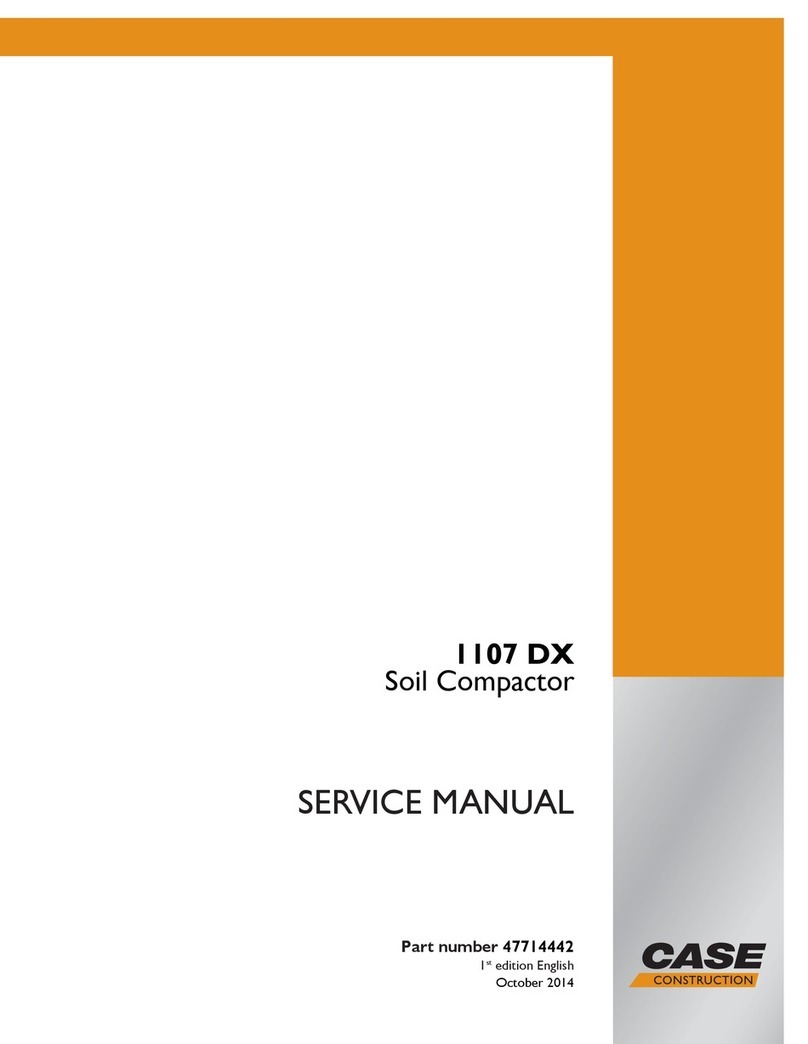
Case
Case 1107 DX Service manual
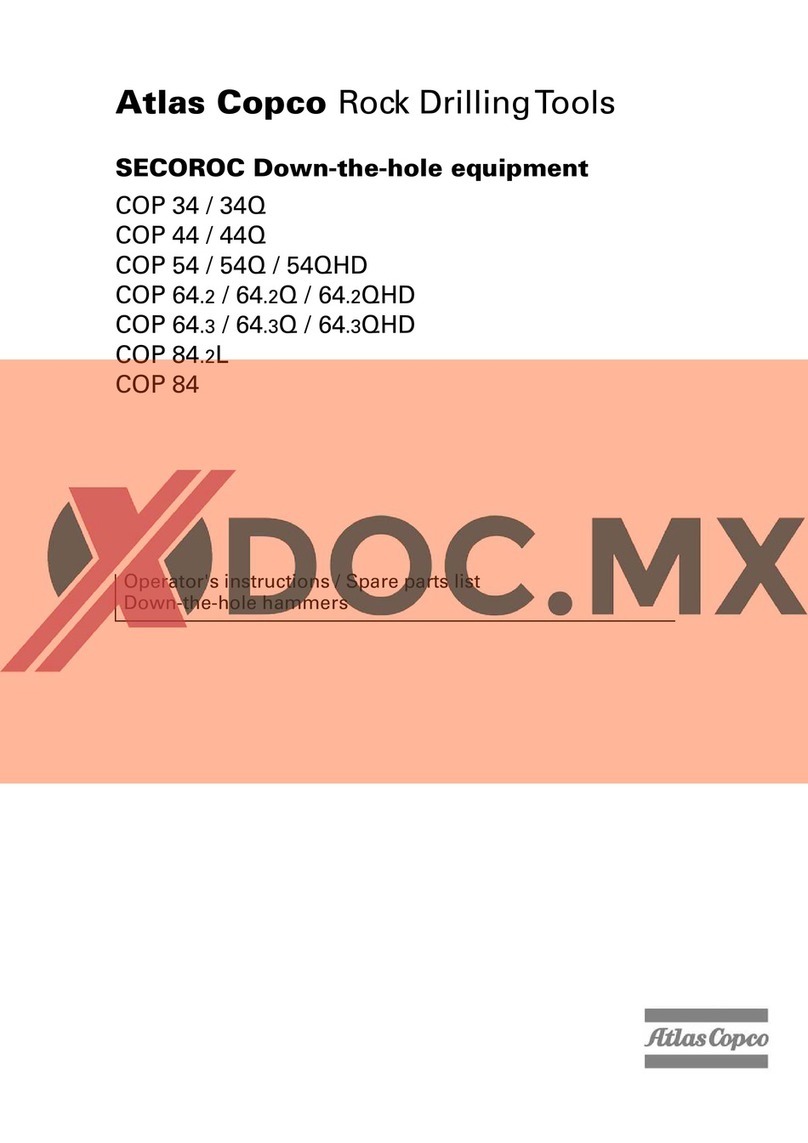
Atlas Copco
Atlas Copco SECOROC COP 34 manual
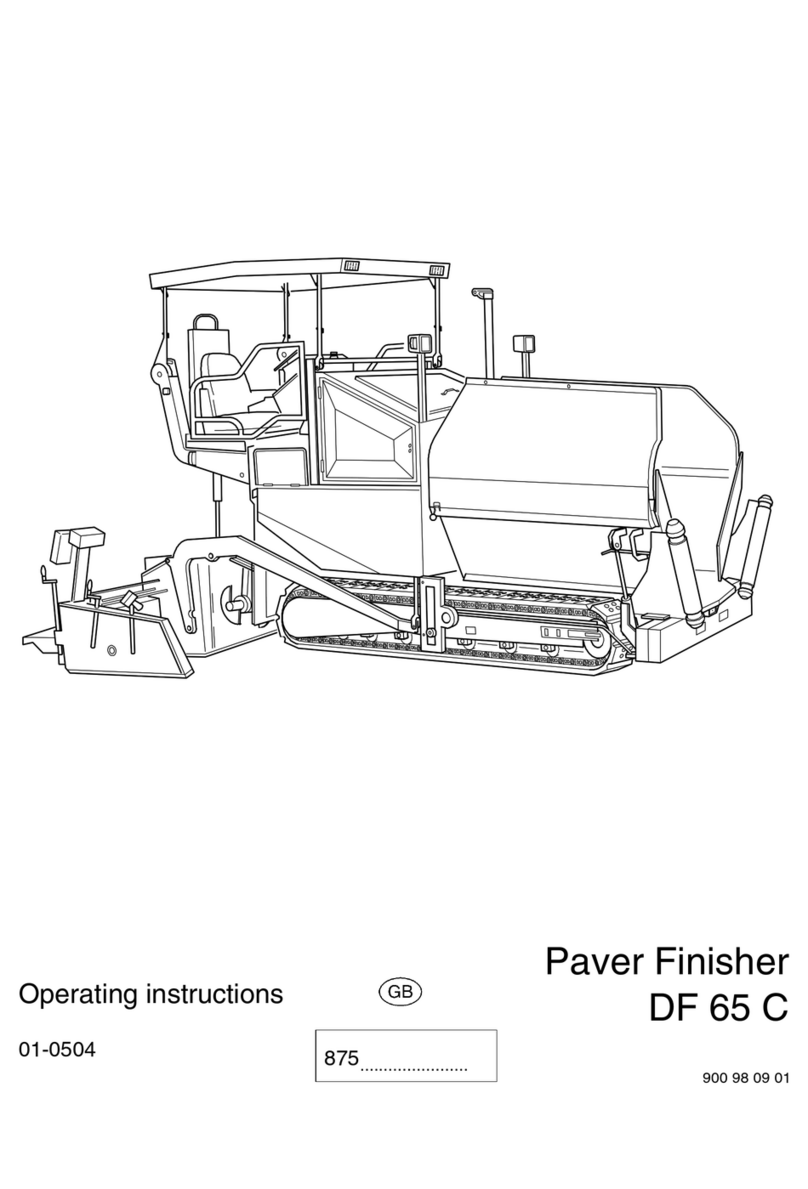
Dynapac
Dynapac SVEDALA DEMAG DF 65 C operating instructions
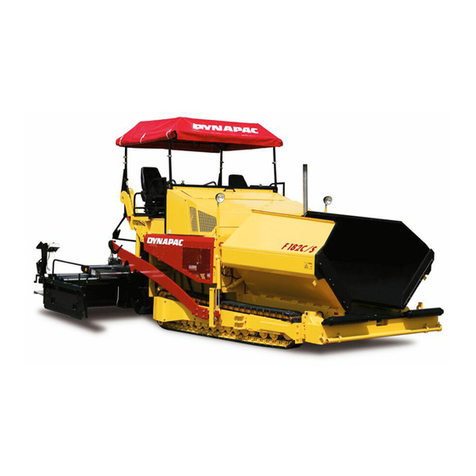
Atlas Copco
Atlas Copco Dynapac F 182 CS operation & maintenance
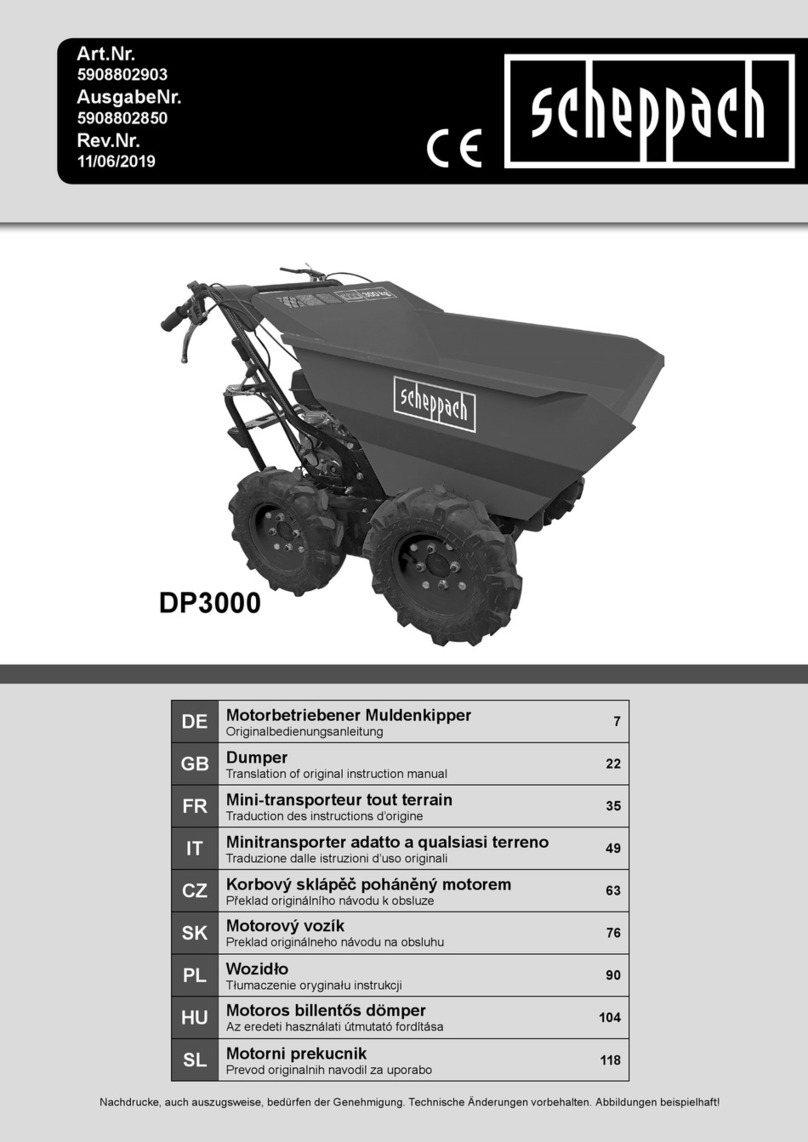
Scheppach
Scheppach DP3000 Translation of original instruction manual

Auto Crane
Auto Crane 6006EH owner's manual
